OVER THE TOP
Have we reached peak purpose?

Musings on AI from the Creative Report Card toppers
CMOs Ask (each other)
Anything










In
Peak purpose
Uncovering the current state of cause marketing – and how brands can avoid purpose pandering.
Creative Report Card
The 2024 toppers discuss, debate and dissect the impact of AI on their creative (...and their careers).
CMO Interview
Marketing heads at Scotiabank and IKEA sit down for a fireside chat in the first of a new, ongoing strategy content series.


ON THE COVER: There have been mumblings of a countermovement. Woke capitalism has become a conservative sneer. Shareholders are griping about businesses' fixation on saving the planet & people, saying there's only enough time in the day to pursue profits. And consumers are becoming ever-more leery of cause-washing; some even prefer brands focus on fixing the economy, before solving
hunger. Of course, when done right, purpose marketing works. The question is... have we indulged too much? Cover art by C.J.
OVER THE TOP Have we reached peak purpose? Musings on AI from the Creative Report Card toppers CMOs Ask (each other) Anything
world
Burton.
4 Editorial The purpose of purpose • 8 Upfront New packaging rules are incoming, here's how to prepare. Plus, a verdict on four-day workweeks and a look at the child-free movement • 26 AToMiC Awards The Gold-winning work in all its glory • 36 New Establishment stars in the making • 50 Forum Hershey's Andrew Mushing on what marketers want (from their agencies) 15 48 10 3 Spring 2024 THE NEW COLLABORATORS A look at bespoke activations and the players with the skills required to execute. SUPPLEMENT Page 41 Collaborators New Collaborators New SPONSORED SUPPLEMENT 41 Increasingly, brands are being asked to move at the speed of culture, delivering the perfect message at the perfect time, on the perfect channel. And with the plethora of tools to master for each channel, sometimes it just makes sense to call in the subject matter experts. In The New Collaborators, we take a look at the content partners and specialist shops that are helping marketers keep up and stand out. The The SPRING 2024 VOLUME 35, ISSUE 2
this year's
CRC, we asked top creatives, like BBDO's Olga Netaeva (#3 AD), to experiment with AI portraiture.
EDITOR’S NOTE
Is purpose-pandering on the rise?
Idistinctly remember the day my personal credo locked horns with the industry I cover. It was Sept. 12, 2023. Strategy's publisher Lisa Faktor had just texted me the link to Apple's new "Mother Nature" commercial, knowing I would appreciate the brazeness of its climate-conscious messaging. I did. Who wouldn't? I read the LinkedIn posts that day. Almost all were left positively charged after watching Mother Nature (played by actress Octavia Spencer) grill the behemoth corporation, demanding tangible action over empty promises. It's a brilliant piece of marketing that airbrushed Apple as an eco-saviour. Some called it a "masterclass" in sustainability communications. And I'm willing to bet it went straight into many a creative's "I wish I'd done that" mental folder.
Pretty soon after coming out of my fangirl haze, though, I remembered the internal battle I wage with Apple, and so many others like Apple. The words "planned obsolescence" kept head-butting my excitement over the ad, until I started to feel myself become, admittedly, incensed. Knowing that "durability" is not in the brand's vocabulary and its avoidance of addressing the practice of purposely designing frail phones that last, at best, two years, got me questioning other smokescreens brands are building under the guise of ESG.

A CULTURE WAR IS GROWING, WITH THE RIGHTWING CALLING OUT THE HYPOCRICY OF "WOKE CAPITALISM" AND DISMISSING IT AS "ELITIST" OR DISCONNECTED FROM PROFITS.
It's no wonder purpose marketing is under attack. A culture war is growing down south, with the rightwing calling out the hypocricy of "woke capitalism" and dismissing it as "elitist" or disconnected from profits. Businesses are being slammed for pursuing progressive values – rather than money (their raison d'etre). And there are economic pressures, too: ESG concerns are not at the top of orgs' priority list. They used to be #1, now they're #3, according to Google research. Execs are cutting corners in their eco initiatives, as they're forced to achieve the same results with less money.
Forgive me, for I am not a nihilist. However I am a realist. I'm not advocating for brands to scale back on their ESG commitments in response to these socio-economic forces. I recognize that today marketers face the questions: should we go on, but talk about our efforts less? Or continue full steam ahead with our marcom, knowing that consumers want someone to step in (when governments can't/ won't)? I don't have the answers, although I'd like to give a reco, not as an editor, but as a human being with skin in this game of life – talk about your brand's actual purpose, not what you think it should be. And don't use the environment to sell phones designed for waste. It's not a good look.
Jennifer Horn Content Director and Editor, strategy
spring 2024 volume 35, issue 2 strategyonline.ca
publisher | lisa faktor | lfaktor@brunico.com
content director, editor | jennifer horn | jhorn@brunico.com
art director | tim davin | tdavin@brunico.com
special reports, c-suite editor | sheima benembarek | sbenembarek@brunico.com
associate publisher | neil ewen | newen@brunico.com
strategydaily editor | andrew jeffrey | ajeffrey@brunico.com
media in canada editor | greg hudson | ghudson@brunico.com
senior reporter | chris lombardo | clombardo@brunico.com
reporter | andrea hernandez | ahernandez@brunico.com
contributors | megan haynes, wendy kan, will novosedlik account manager | conidon pinto | cpinto@brunico.com
account manager | nupur purohit | npurohit@brunico.com (leave)
marketing co-ordinator | emily yuill | eyuill@brunico.com
CORPORATE
president & ceo | russell goldstein | rgoldstein@brunico.com
evp, strategy and realscreen & editorial director brunico | mary maddever | mmaddever@brunico.com
director, finance & administration | michelle plaskon | mplaskon@brunico.com
creative services & dist. manager | adriana ortiz | aortiz@brunico.com
customer support supervisor | christine mcnalley | cmcnalley@brunico.com
how to reach us
Strategy, 366 Adelaide Street West, Suite 100, Toronto, Ontario, Canada M5V 1R9
Tel: (416) 408-2300 or 1-888-BRUNICO (1-888-278-6426) Fax: (416) 408-0870
www.strategyonline.ca
customer care
To order a subscription, visit strategyonline.ca/subscribe. To make a change to an existing subscription, please contact us by email: strategycustomercare@brunico.com.
Tel: (416) 408-2448 Fax: (416) 408-0249. 8799 Highway 89, Alliston, ON L9R 1V1.
subscription rates
STRATEGY is published five times per year by Brunico Communications Ltd.
In Canada: One year CA$80.00 Two years CA $144.00 (HST included. Registration #856051396 RT)
Single copy price in Canada is CA$6.95. Please allow four weeks for new subscriptions and address changes.
copyright and trademark
STRATEGY and the tagline “Bold vision brand new ideas” are trademarks of Brunico Communications Ltd. All rights reserved. Nothing may be reproduced from STRATEGY in whole or in part without written permission. Reprint requests should be sent to rgoldstein@brunico.com. © 2018 Brunico Communications Ltd.
postmaster notification
Canadian Postmaster, send undeliverables and address changes to: Strategy, 8799 Highway 89, Alliston, ON L9R 1V1 strategycustomercare@brunico.com
U.S. Postmaster, send undeliverables and address changes to: Strategy PO BOX 1103 Niagara Falls NY 14304 Printed in Canada. Canada Post Agreement No. 40050265. ISSN: 1187-4309.
Member of
4 strategyonline.ca


All the media news you need. Replenish daily.
Sign up for your free trial and stay connected with all the change afoot across the Canadian media scene.

https://mediaincanada.com/subscribe/



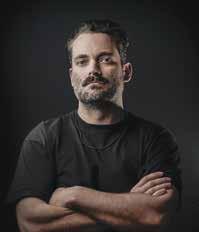
ASSOCIATE PUBLISHER’S NOTE
Spring has sprung! It gets better from here (right?)
I know what you’re thinking… Who gave this guy the keys? First, they let him on stage at the most prestigious award shows in Canadian marketing. And now this? Well, here I am, writing my first pub note for strategy, the voice of Canadian marketing and advertising. The imposter syndrome is real.
PERHAPS THERE IS A TECH GENIUS AND STRATEGIST IN THE MARKETING WORLD WHO CAN DEVELOP A GEN AI PLATFORM THAT SPITS OUT THE PERFECT MIX OF EMPATHY, RESPONSIBILITY, AUTHENTICITY, OPENNESS AND INCLUSION (AND TAYLOR SWIFT) FOR A BRAND PLATFORM TO THRIVE.
For as much initial concern as 2023 had, it actually wasn’t as bad as forecasts suggested. Many say a rough economic storm is brewing for 2024, though. Fear not, we’re entering spring, and with that comes rebirth. Even with all that is going on, there are plenty of opportunities to be optimistic about.
First up, I’m very much looking forward to our newly rebranded Connected Commerce Forum, formerly known as the Shopper Marketing Forum.
The evolved lens tackles all that is omnichannel from a customer experience, loyalty and, ultimately, sales POV – and this year the Forum returns to a two-day format, so join us April 22 + 23 as we dive into what will drive growth in 2024 and beyond.
Our team has also been working diligently on giving strategy a digital facelift (stay tuned for more). With our site redesign will come more opportunities for brands, agencies, media companies, and other industry partners to tell their stories and share their solutions.
The first example of this is our recently announced strategy’s Guide to AI sponsored supplement, where we profile and explore the different generative tools marketers need to know. Let’s connect if you want to talk about how we can help in telling your story.
And finally, with the spring comes anticipation of all the amazing work that will be revealed at The Marketing Awards on June 4th. I always leave the party feeling inspired and rejuvenated.
The show is the last hurrah before industry leaders retreat North to their cottages, where they find the space and pathways to inspire the next innovation, solution or program to solve their brand’s (and sometimes the world’s) problems. Perhaps a phygital streetwear collab upcycling those branded NFTs? No? Just me?
That said, we can’t hide behind the warm weather and summer vibes – the industry will continue to face its challenges. It could very well be a bumpy road ahead, but there’s always opportunity. And combined with the right amount of optimism, creativity and ingenuity we can get back on track, and to a better place. As much as everyone is questioning the value of purpose-based marketing and how to do it authentically –while still driving business results – I think now more than ever there is opportunity for brands to act as positive stewards for the environment and society, and win doing it.
Perhaps there is a tech genius and strategist in the marketing world who can develop a gen AI platform that spits out the perfect mix of empathy, responsibility, authenticity, openness and inclusion (and Taylor Swift) for a brand platform to thrive. Maybe it will be one of the many bright minds and industry leaders profiled in our annual Creative Report Card (p.15) or emerging talents that make up this year’s New Establishment (p.36) crop who will unleash this super algorithm for the world’s marketers’ benefit.
I, for one, am looking forward to the many rebirths and inspiring work that this spring –and the rest of the year – will surely bring.
With hopeful optimism,
Neil Ewen, associate publisher, strategy
6 strategyonline.ca
The future of commerce is connected.
Get the full picture on the state of retail commerce and shopper marketing.
April 22 + 23
Arcadian Court Toronto
REGISTER

WORKING MODELS
THE VERDICT ON THE 4DWW
By Christopher Lombardo
TREND
VOLUNTARILY CHILDFREE, HAPPY AND RICH(ISH).
By Sheima Benembarek
The DINKs phenomenon – also known as the playful acronym that stands for “double-income, no kids” – is a societal shift that challenges the traditional nuclear family structure. Lately, it’s been making the rounds
It’s often said that Europeans work to live while North Americans do the opposite. But some shops in the advertising sector – known for its grind culture and high burnout rates – are channeling continental values by giving staffers some of their time back.
About a year-and-a-half ago, Tux Creative, which employs 100 staff, adopted a shortened four-day workweek (with Friday off), first in its Montreal office, and later in Los Angeles. Tux reports that, in 18 months, revenue margin increased by 24% in 2023 versus 2022, and turnover reduced from 27% to 8%, the lowest among Quebec agencies. It also reports it attracted more senior talent. The diversification of staff had impacted its work and client relationships, while Tux saw a “significant change in employee satisfaction metrics and overall happiness.”
Dominic Tremblay, Tux’s founder says he was inspired by the book Shorter: Work Better, Smarter, and Less – Here’s How by Silicon Valley futurist Alex Soojung-Kim Pang, which, despite detailing case studies outside of the marketing milieu, was helpful in implementing the model at his agency. There are diminishing returns in advertising, says Tremblay, with no 1:1 relationship between hours and creative output. As he explains, in a typical 55-hour workweek grind, you probably get “20 great hours,” and “10 not too bad” ones with the rest being “crap.”
Meanwhile, Winnipeg indie agency Brandish marked six months of a permanent four-day workweek in the spring of 2022, and at the time, the shop told strategy that it received “nothing
but positive feedback from clients, employees and community members about this change.” Brandish also reported that its productivity and efficiency improved by reducing unnecessary meetings and working asynchronously.
For the 30-person agency, the move to four days came about as a response to mid-pandemic burnout, inspired in part by HubSpot’s “global week of rest,” in which the software giant operated with reduced staff, while still able to respond to urgent matters.
“It was a quick decision… and looking back, maybe we could have thought about it more,” admitted Brandish co-founder and managing partner, Lee Waltham. The move to a so-called 4DWW began with Fridays off for two months in the summer of 2021 as a test, before the four-day workweek was officially introduced that fall. Over time, Waltham figured, “Why don’t we continue to do this… and figure out the process stuff as we go?”
Prior to implanting its 4DWW, the agency was used to seeing alarmingly high turnover with hires that came out of Toronto. However, now, “the fourday workweek… and the culture we have at Brandish is the reason people stay here.”
When it comes to big global agency conglomerates, both Waltham and Tremblay agree that they’re far too margins-focused to adopt a 4DWW model. For now, anyway. As smaller organizations operating remote/hybrid workplaces, Brandish and Tux are able to accommodate the transition to this new world of work in a way that bigger, more complex agencies likely cannot.


on social media, particularly on TikTok, with couples promoting the fact that they have chosen to opt out of the family planning narrative in favour of personal fulfillment, career aspirations and financial freedom.
And who can blame them? Stats Canada reports that, for a two-parent, middle-income family with two children, raising one costs about $293,000 (an average of $17,235 per year). The DINKs lifestyle choice allows consumers the freedom to allocate resources differently, shaping a life that suits their desires.
On TikTok, #DINKS are sharing videos of themselves, well, living their best lives. And sometimes, that includes a fun date at Costco where. TikToker Kate (@engelthang), who
8 strategyonline.ca
refers to herself as “Former bride, now a DINK,” and her husband shared this very experience. Their viral video, which has 11.8 million views, starts with her asking, “Why is nobody talking about being DINKs? Today, we went to Costco and since we don’t have kids to feed, we’ve got plenty of money to spend on goodies!” They then go through their shopping journey – sharing their favourite brands – and leave with $252 worth of treats.
Neither the term DINKs nor the lifestyle is new. In fact, it was coined in the ‘80s. But it recently made a resurgence, partly as the result of a rocky economy, says Janessa Bishop, VP and digital communications practice lead at Kaiser & Partners. According to a 2024 survey by Pollara Strategic Insights, 82% of respondents believe Canada is in a recession.
“For millennials and Gen Z, things like owning a home or starting a family may feel out of reach in this economic climate. These younger generations are starting to reshape conventional norms and are considering issues like climate change before having children,” explains Bishop.

Consumer interests differ for this group, and so should the way brands speak to this growing demographic. “Do your research. What motivates their purchasing decisions? What kinds of products, services and experiences do they care about? The DINK community is not all one and the same,” Bishop says. “Some of them are spending hundreds on snacks, others are planning lavish vacations and some are putting one income into savings for the future. It’s important to segment this audience even further and identify subsets within this group. As an example, there’s already DINKWADs (double-income, no kids, with a dog) and SINKs (single-income, no kids).”
In Canada, DINKs households increased by 30% in the last ten years, according to Gitnux, an independent marketing platform. And while they may have more money, understanding their motivations is key. “Brands can use TikTok as a search platform with prompts like ‘A day in the life of a DINK’ or questions like ‘What do DINKs spend money on?’ This research can help inform your brand’s marketing approach and message,” Bishop adds.
READY FOR CANADA’S NEW PACKAGING RULES?
By Andrew Jeffrey
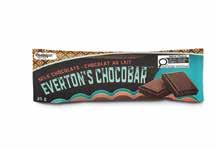


On January 1, 2026, Canadian grocery store aisles will be flooded with fresh packaging that CPG brands are getting ready to adopt – whether they like it or not. Up and down the aisles, consumers will find products showcasing black-and-white stickers. They won’t be pretty, but they will be mandatory.
Canada is set to introduce these front-ofpackage (FOP) nutritional labels in 2026 for products that contain more than 15% of the suggested daily value of saturated fat, sodium or sugar. The goal is to ensure consumers are informed about the health quality of the products they’re buying.
In 2023, NielsenIQ research found that 47% of Canadian respondents said they would buy less food or beverage products with the new FOP nutrition symbols. Its research also found that when Mexico introduced similar labels in 2020, purchasing frequency for products with warning labels fell by 10%.
“You can’t just treat this as a label update,” says Rodmell & Company president Patrick Rodmell. “It will change how consumers look at products, and you have to manage that or you could lose brand equity and sales.”
To soften the blow of new labeling rules, Pigeon’s VP of strategy Stephane Crevier advises companies prominently highlight
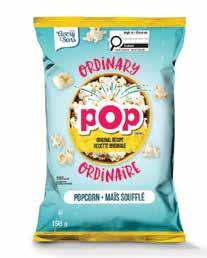
other positive attributes. Even if the product is full of sugar, other health or environmental benefits can be emphasized more. “It’s about re-targeting consumer attention on other information,” Crevier says. “[For example], if you have a cause or you protect something on the planet, this message on the back panel could come on the front to attract attention.”
The new black-and-white labels could necessitate an overhaul for some. On bright or pale-coloured packaging, for instance, Crevier says the labels might be more noticeable. The shape of a package could also be an issue, he adds, using Pringles as an example where it could be difficult to place the label on its cylindrical packaging that doesn’t take attention away from the logo or product name.
Carbonated drinks and chocolates are likely to see a sales hit, but some plant-based foods are at risk too, Crevier says. If a product is marketed as being healthier for consumers, having a label that warns of high sodium levels could turn buyers away.
The label change is less than two years away, but that deadline isn’t as far off as it seems, Crevier says. “We will have to create new reflexes, we cannot think the same way as usual in terms of packaging platform structure.”
UPFRONT REGULATIONS
9 Spring 2024
Above: Savvy DINK TikTokers shopping at Costco and IKEA.

2
Have we reached peak purpose?
SOME EXPERTS BELIEVE THE PROLIFERATION OF MARKETERS LINKING THEIR BRAND TO A CAUSE IS IGNITING CONSUMER FATIGUE.
BY WILL NOVOSEDLIK
TWO YEARS AGO , the Harvard Business Review published an article in which it considered the confusion and controversy surrounding the pursuit of corporate and brand purpose. The piece pointed out that purpose had become something of a fad and a victim of its own success, and that if you were going to pursue it, you had better understand why you’re doing it and how it works. Like the obsession with vision and mission statements from the early ‘90s, the authors (a collection of CMOs, CHROs, academics and consultants) worried that adopting a corporate purpose to appease shareholders and society runs the risk of putting “speed, shortcuts, and spin… over authentic action.” Despite that worry, which has not been unjustified, the push to define organizations’ purpose caught fire over the years.
Why purpose? Where did it even come from? Rob Galletta, CEO of brand and business consultancy Blackjet, traces it back to a TED talk originally given by leadership guru Simon Sinek in 2009 entitled, “Start with why: How great leaders inspire action.” Says Galletta,
10 strategyonline.ca
PHOTO ILLUSTRATION: C.J. BURTON
“Sinek’s argument was that it’s not enough to have a product or a service and a rationale for buying it. There needs to be a deeper purpose, and everyone in the organization needs to be inspired to act on it.” For Sinek, the answer to “why purpose” was not to make a profit: he was referring to why your organization exists, why you get up in the morning, and why anyone should care. It was never about money. It was about inspiration.
While it’s tempting to trace the origin of brand purpose to a single event, it may not be as simple or as tidy as that.
In the 1970s, the godfather of neoliberal economics, Milton Friedman, argued that a company has no social responsibility to the public or society; its only responsibility is to its shareholders. Anyone who has lived through the last 25 years has seen the results of this line of thinking: massive economic inequality, environmental degradation, deregulation, erosion of the social safety net, and the concentration of wealth within the smallest possible number of hands. The unfairness of these conditions reached its apogee in the Great Recession of 2008, just before Sinek gave his TED talk.
None of this has been lost on the victims, especially the younger cohorts who can see the world that lies ahead is a much tougher, more unforgiving and possibly lethal place than the one they grew up in. In this context, the emergence of purpose as a corporate necessity makes complete sense. If governments can’t, or won’t, protect you or the planet, who will? And if you are a corporation, what are you going to do to attract and retain customers and employees? How will you keep your license to operate in the communities where your business is done?
As marketing and organizational culture expert Hilton Barbour puts it, “I don’t think anyone should be surprised that, as the world became more reflective about the impacts of capitalism, what we’re doing to the planet, and, frankly, to each other, the notion of purpose would rise to the surface.”
The textbook case for corporate purpose is Unilever, and the poster child for enlightened business leadership was the late Paul Polman, who took over as the CPG’s global CEO in 2009. One of his first initiatives was the Unilever Sustainable Living Plan (USLP), which is based on the belief that “in a volatile world of finite resources, running a business sustainably is vital for its long-term growth and also mitigates risk and reduces costs.” It was built on three pillars: improving the livelihood of a billion people through better hygiene, health and nutrition; cutting Unilever’s environmental impact in half; and improving fairness to workers in the workplace,
especially women.
The USLP designated 28 brands from the Unilever portfolio as “Sustainable Living Brands,” selected to help achieve Polman’s growth ambitions. The results were impressive. Under Polman’s leadership, Unilever provided eight years of topline growth and a return more than double that of the FTSE index. In 2020, Gary Wade, then-president of Unilever Canada, told strategy that its 28 Sustainable Living Brands were furthest ahead, growing 69% faster than the rest of the portfolio.
In a 2018 Ernst & Young paper entitled Winning with Purpose , the company’s research revealed that 89% of customers believe that purpose-driven companies deliver higher quality products and services. In an Edelman study, 72% of respondents said they would recommend a company with a purpose. The Havas Meaningful Brands Index claimed that between 1996 and 2011, purposeled companies performed 10 times better than the S&P 500 in terms of revenue growth.
“
“When marketing isn’t part of the conversation about business fundamentals, marketers often fall back on purpose as a marketing strategy. And it’s disingenuous.”
Despite all that, by 2022, sentiment among investors had begun to shift. Terry Smith, founder of the Fundsmith Equity Fund (Unilever’s 9th largest investor), blamed Unilever’s focus on sustainability and brand purpose for the FMCG giant’s underwhelming performance in 2021. Said Smith at the time, “A company which feels it has to define the purpose of Hellmann’s mayonnaise has in our view clearly lost the plot.” That same year, Unilever-owned Ben & Jerry’s sparked market controversy after refusing to sell ice-cream in areas of the West Bank, which, at the time, the company stated as being “occupied Palestinian territory.” As a result of Ben & Jerry’s decision, Unilever shares dropped 9.4% on the year.

- Rob Galletta, CEO, Blackjet
Consequently, in October 2023, Unilever’s newest CEO, Hein Schumacher, announced that the company had been guilty of “force-fitting” purpose into its brands, and set out a new strategy to deliver “faster growth” after admitting the FMCG
11 Spring 2024
”
“
had underperformed. Schumacher added, however, that purpose was an indispensable talent magnet, and the company would never abandon it. He also said that for certain brands, like Dove and Lifebuoy, brand purpose could be highly effective if done well and with credibility. In March of this year, Unilever, announced that it is cutting 7,500 jobs and spinning off its ice cream business to increase profits and curb costs. Some experts suggest that the brand could see added benefits from parting ways with Ben & Jerry’s, whose commitment to social activism has at times created friction with its parent company.
“The purpose of purpose is growth - it needs to be strategically aligned with how you make money. In an attempt to win hearts and minds, brands have elevated the conversation into more than just profit.”

So is purpose good or bad for business? Part of the problem is how to define “purpose.” People often confuse it with CSR, ESG and DEI. Says Galletta, “A lot of senior marketers that I’ve been dealing with are now tasked with being the ESG/ DEI people within their organizations. The rest of the C-suite sees it as a marketing problem, not an organizational challenge. When marketing isn’t part of the conversation about business fundamentals, marketers often fall back on purpose as a marketing strategy. And it’s disingenuous.”
- Ron Tite, founder and CCO, Church+State
As the HBR article pointed out, the word “purpose” tends to be used in three senses: cause-based purpose (such as Patagonia’s “We’re in business to save our home planet”); competence-based purpose (such as Mercedes’ “First move the world”), which expresses a clear value proposition to customers and the employees responsible for delivering it; and culture-based purpose (such as Zappos’ “To live and deliver WOW”), which are effective at creating internal alignment and collaboration with partners. Any of the three can create a meaningful “why.”
To illustrate how confusing things can get, Des Jones, CSO of Juniper Park\TBWA, points to the cause-related flop of Bud Light’s collaboration with trans influencer Dylan Mulvaney. The U.S. brand’s decision to feature the TikTok star in a marketing campaign subsequently lit an internet firestorm.
“While diversity and inclusion are a noble cause, Bud Light lost sight of its purpose, which is to be the beer for everyone,” says Jones. “Unfortunately a sizable proportion of Bud Light drinkers read the Mulvaney stunt as meaning ‘the beer for transgender people’.” Bud Light’s attempt at recovery was haphazard and made things worse, resulting in major losses in both sales and market share.
Sometimes, even when the activation is aligned with the purpose, the brand can attract the wrong kind of attention. For example, Doc Martens, which has long-supported the LGBTQIA+ community, recently found itself accused of being “woke” by right wing social users. The brand’s purpose is deeply interwoven with the community, and 30% of the company’s employees identify as LGBTQIA+, according to a Forbes article. Yet when the brand ran a contest offering a chance to win a custom pair of boots designed by artist and LGBTQIA+ supporter Jess Vosseteig, the attacks flooded in from right wing consumers as if the contest were aimed at them.
What about culture-based purpose? Almost everyone strategy spoke to for this article agreed that a purpose’s greatest value is its ability to galvanize internal culture. Says Barbour, “To me, the most sustainable competitive advantage of any organization is its culture. Culture is either an accelerant or impediment to their strategic goals. Certainly the messages we send out to the world are a key part of marketing, but the ability to deliver against the promises made by marketing is culture. If it doesn’t start with culture, then however the brand manifests itself externally will always feel like lipstick on a pig.”
Andrew Oosterhuis, VP marketing at Labatt Breweries Canada, couldn’t agree more. He cites owner AB Inbev’s purpose as “dream big and create a future with more cheers.” Says Oosterhuis, “It’s my job to operationalize that. So I have created an annual culture day where we ask, ‘What does this mean for us as a team?’ Every quarter I invite all my external partners to join us for a beer to talk about business results and highlight examples of how we’re trying to dream big. And every Monday morning at 8:30 I send an email to my team entitled ‘Dreaming Big,’ in which we recognize individual performance and I remind my people that if not us, who?”
As for competence-based purpose, Kellanova is in business to “create better days and a seat at the table for everyone,” says VP of global cereal, Emma Eriksson. “Better days is about the food that nourishes you. A seat at the table is about inclusivity and equality.” It makes sense then, that, being in the cereal business, Kellanova demonstrates purpose
12 strategyonline.ca
”
through its support for school breakfast programs across Canada and Europe that “provide nutrition to underprivileged children at the start of their day.”
Katherine Bond-Debicki, CMO of KFC Canada, also points to her brand’s focus around food insecurity. “As part of the world’s largest restaurant company, I look at where we’re going and I feel we’re really clear on how our purpose needs to connect to what we do best, which is to be grounded in food and access to food,” she says. “So for the past eight years we have had in place a foundational program here called Harvest (soon to be renamed ‘KFC Donations’), where we donate our surplus protein and vegetable ingredients to local food banks across Canada. More than half of our restaurants are part of this.”
Brands like Kellanova and KFC understand the importance of aligning ESG efforts with their brand purpose. Ron Tite, founder and chief creative officer at Church+State, agrees that purpose needs to align with the business you’re in, but “the purpose of purpose is growth – it needs to be strategically aligned with how you make money… In an attempt to win hearts and minds, brands have seen the need to elevate the conversation into something that is more important than just profit. The problem is that they’re coming up with things like ‘our purpose is to save the world, which is why we make crackers.’ No. The purpose of purpose is to define what your organization fundamentally believes in, use that purpose to guide and to focus activity, and infuse it into your marketing communications.”
He gives the example of GM, which undertook a rebrand in 2021. “They saw that their business was completely changing, so the first thing they did was create a new purpose statement: ‘We stand together to drive the world forward.’ Then they asked themselves, how do we back that up? So they added 14 EV products to their portfolio. They redesigned the customer experience. To communicate purpose in a way that’s relevant, entertaining and engaging, they didn’t [repeat their mission statement] ‘We stand together to drive the world forward.’ [Instead], their line was ‘Everybody in,’ which speaks to diversity and inclusion when it comes to people, and to a diversified portfolio when it comes to product.”
However, with the proliferation of purpose marketing over the years, some researchers point to the arrival of a new era in which “purpose fatigue” is causing cause initiatives to fall short of consumer expectations. A Febuary 2024 report from Proof Strategies CanTrust Index found that “Canadians have a limited desire for business leaders to speak out about... climate change, racism, and social equity.” In fact, there’s been a drop in the number of Canadians
who believe business leaders should speak out on these issues – 49% in 2023 vs. 57% in 2022.
As strategist and brand coach Mary Jane Braide observes, “I think marketers [have been] responding to a couple of things. One is that everybody else is marketing purpose, so it’s not a differentiator anymore. It’s now table stakes.” Galletta agrees: “My beef with purpose is that everyone’s picking the exact same areas: environment, diversity, sustainability. It just all sounds the same.”
“Prior to 2020,” continues Braide, “60 to 70% of consumers said they actually prefer to transact with companies or brands for whom purpose is central. Well, that number’s gone down. Part of it was the pandemic: people were less concerned about your brand’s purpose and more focused on their family’s survival. But post-pandemic, inflation and financial pressures made people more oriented to transactional value propositions. A lot of marketers were relying on those prepandemic numbers in their campaign pitches to say, ‘Let’s go to market with purpose, because consumers buy on it. But that’s not necessarily true anymore. Worse, many marketers have shoehorned purpose into campaigns as opposed to purpose being derived from the [business] strategy.” And that’s how purpose fatigue sets in.
“Prior to 2020, 60 to 70% of consumers would say that they actually prefer to transact with companies or brands for whom purpose is central. Well, that number’s gone down.”
- Jane Braide, strategist and brand coach

In a sense, the term “purpose marketing” contains the seeds of its own demise. It goes back to the HBR article, which asserts that “conflating marketing and purpose can lead to the sort of posturing whereby British American Tobacco and Philip Morris International claim that their purposes are, respectively, ‘to build a better tomorrow’ and to ‘unsmoke the world and create a better tomorrow’.” (Both are developing smoke-free products that are less harmful, but not entirely free from harm.)
In other words, if you’re using purpose as a sales tool, then you are prioritizing the sale over the purpose. Your “higher” purpose is already compromised. And people can see right through that.
13 Spring 2024
“ ”

Stay connected with daily brand news.
Sign up for your daily briefing and get context for all the marcom news, research & trends impacting the Canadian market.
strategyonline.ca/subscribe
BY SHEIMA BENEMBAREK
Strategy’s 2024 Creative Report Card is here, once again providing valuable insights into the top performers. H And to no one’s surprise, Rethink emerged as the #1 Agency. The recognition is not only a testament to its creative brain power but also its ability to adapt to industry innovations. And no other innovation has been topof-mind like artificial intelligence. H Which is why, this year’s report has an an AI theme. The technology has, without a doubt, disrupted the entire advertising industry. With its ability to analyze vast amounts of data at incredible speed, it has the potential to enhance
advertising processes if not strategies. It cuts down on the discovery and distillation phase. H But despite these benefits, quality and bias concerns linger, prompting the industry to strike a balance between leveraging AI capabilities and trusting that humans are, ultimately, the drivers of this train. But who knows what potential it holds for the advertising sector in fifty years? For now, it seems to be slowly establishing itself as a useful tool – a tech version of a new, smart, and crazy fast, assistant. Turn the page to read more about this year's toppers, and what went behind some of the work that won.
15 Spring 2024
All of the portrait images of the CRC winners were self-generated through prompts on Midjourney, DALL-E 2, ChatGPT4, Photoleap, Photoshop Generative Fill and Canva
From observation to insight: Will AI ever make the creative leap?
Aaron Starkman is the CRC’s #1 CCO, while Sean McDonald sits in the #1 Planner spot at Rethink, this year’s Top Agency. Here, they share their thoughts on AI and how they’re approaching the tech.
So, is AI the way forward or is it a mistake?
Sean McDonald: I wouldn’t put it in that binary. I’m old enough now that I have been through several tech waves. I started in the agency space when the conversation was social media. And then it became digital, and then it was data, data, data. And now it’s AI. And two things always happen: agencies over-index, they productize and they isolate the trending thing du jour. So you’ve got AI agencies that are full of prompt masters and the people who know how to do all of the things. Because it’s a good sales soundbite: “We have the relevant thing you’re excited about that we barely understand.” And then they take on new clients. Or other agencies – either in a laggard way, or in a cautious and very deliberate way – take it on slowly. They bring it to their agency and they play with it and learn how it works and what you can do.
Aaron Starkman Rethink #1 CCO

Rethink has always been Rethink. We’re gonna dabble in AI just like we dabble in everything – things that are great, things that are silly, things that are technological and things that aren’t. Is AI the future? AI is part of the future. But so is the next thing. And so are the three other things that are still happening from the past. I’m a little bit bored of it, to be honest. Because I think people get more excited by the shiny objects than they do about doing the hard work and just challenging themselves to be excellent with any tools that they have. And I think our industry should really double down on enabling people to do great work, leveraging whatever tools they have in place. And if AI is one of those tools, fantastic. But I think we get more excited about these tools than we do about the conditions and the people that really lead to great work. And so I lament that a little bit. I think people are always going to be the future. And I think there’s going to be a litany of tools to help them.
Are you integrating AI in work processes at Rethink?
Aaron Starkman: Wheel-spinning is the enemy of Rethink. And AI has actually been quite beneficial in helping us in our goal of eliminating all kinds of wheelspinning. Since Rethink’s inception, art directors, for instance, were encouraged to come up with lots of ideas and not waste time using Photoshop or drawing up images. AI platforms, like Midjourney, have been useful in really saving art directors’ time and freeing them up to come up with more ideas. In our process, we also do peer review, and AI has actually been useful with that too. Several teams are using it that way. You can copy and paste a script, put it in there and ask for feedback. And we get shockingly acceptable results. We prefer peer-review with people. However, if there are tight timelines, AI has been useful.
For instance, we heard from AI that a spot was
16 strategyonline.ca
boring in the middle. And that actually lined up with a lot of what some creative directors were saying in peer review. We heard from AI the product wasn’t incorporated early enough in the story. And this is what some of our account people said. AI has also eliminated wheel-spinning in terms of production. You can get into a situation when you’re approaching a shoot, where there’s miscommunication between the agency and the production company or the director because you’re using images that are close to your vision, but they’re not exactly what’s in your head. AI can get way closer than images you will find on Google in terms of depth of field, the lighting, the mood, if there’s a smoky background. And you just get on the same page faster and there’s no guessing. It can achieve that. It can speed things up. It’s just another tool like Reddit or Photoshop.
One thing that AI can’t do properly, or do well, is creative. Like a headline, for instance, a team has never succeeded in having AI write a passable headline. I do think there are people that could lose their jobs. AI can do a decent rip; it can write decent social copy. But it can’t compete with excellent creatives, and at Rethink, we are always pursuing creative excellence.
McDonald: AI is operating at the level of a moderately experienced strategy intern. When interns write a brief, it’s the summary of observations. That’s what they’re doing. Here are all the things that I’ve heard everybody say, and I put them in one place. A more experienced strategist can take all of that and say, “This doesn’t matter, this is most important,” and make it interesting by reframing it. AI, right now, is intelligently aggregating salient bits from all over the place, but it isn’t doing the leap from observation to insight. When you have to get to the creative leap – pulling the heartstrings, and managing the intriguing and unexpected turns – it’s useless.
What is it that humans have that AI doesn’t have?
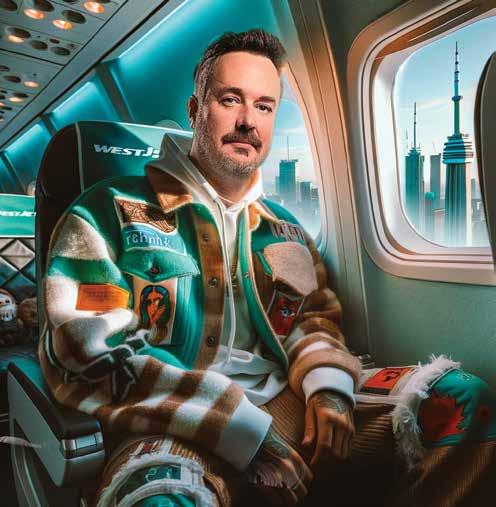
it is because, procedurally, we can protect ourselves from that. If you’re asking somebody else to do your homework for you, you’re accountable for not being able to explain how you got to the answer.
What lessons can you share when it comes to emerging technologies?
Starkman: Empathy. Freshness is also something we’re always looking for. And that’s not really achieved by AI in any way, shape or form, because AI is working with things that are done. It’s taking things that exist and melding them together. Freshness comes easier and more naturally to humans.
Do you have any concerns about bias or other ethical issues?
McDonald: Bias is a fact. Neither of us is going to fight that it exists. And the reason that bias exists is because AI is only learning from its creators. And the predominant perspective of its creators is not an inclusive representation of humanity, nor Canadians, nor North Americans. Voices are not equally represented in the source material for AI, period. So absolutely. But the reason I don’t worry about
McDonald: I don’t know if you remember when Publicis famously said, “Nobody’s going to Cannes, because we’re investing in Marcel. It’s Marcel’s time, the time is now.” People had to miss out on a celebration of human creativity because they were going to create Marcel, which became an intranet, as I understand it. It’s a cautionary tale to say, if you productize something, you are taking a sales motivation, and you are saying to yourself, “I have an asset that I can sell to drive revenue, to create new opportunity.” If you have an excellent orientation towards doing great work, you will recognize all these tools and evaluate their opportunity to help you and stay focused on what you do best. I think everybody has to just calm down, focus on excellence and be devoted to that. If your vision is clear, you’re fine. If you’re subject to trends because of the motivations of sales, then you’re gonna have problems. You’re going to fall victim to any fad.
17 Spring 2024
Sean McDonald Rethink #1 Planner
Transforming shallow holes into creative canyons
The report card’s #1 Creative Director Mike Dubrick at Rethink shares what went behind the campaigns that led to Kraft Heinz topping this year’s Brand list.

The idea: For “Heinz Slow this Ad,” the brand aired a 0.57-second ad during a NASCAR race and asked viewers to pause the Heinz Ketchup ad and play it back at a slower speed, revealing a code for a $5 discount on DoorDash orders.
The backstory: “At Rethink, we do everything we can to make sure that an idea will be impactful. At the same time, we also want to put multiple ideas out into the world over the course of a year. We’re not necessarily making one or two big bets that we put all of our money behind. With “Heinz Slow this Ad” we were less concerned about whether or not consumers were going to pay attention. Honestly, the broader concern was whether [media companies were] even going to let us do it in the first place. Our partners were excited about the idea, but that type of media buy did not exist. Our experience has been that if the idea is exciting and compelling, people will find a way to make it happen. But we definitely got the emails that said, ‘We’re concerned, we’re not sure how we can pull this off.’ A huge credit goes to our media partners.”
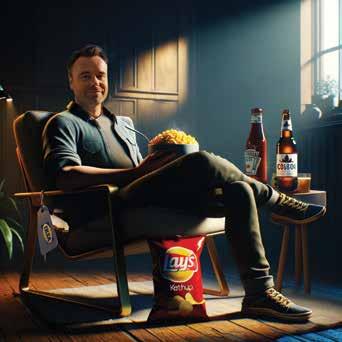
The idea: For “Vintage Drip,” Kraft Heinz capitalized on thrifting and sustainability trends by turning ketchup stains into a fashion adornment via a collection with thredUP, which showcased items from luxury and streetwear brands, including Gucci and Nike.
The backstory: “At Rethink, we practice something that we call “shallow holes,” which means we’re not going to go really deep into one idea, at first. We’re just going to scratch the surface and see if it creates excitement or energy. This allows us to create lots of ideas.
“Vintage Drip,” in particular, was interesting because the request from the client was broad. The ask was: what could we do in the merch space that would be powerful, really true to the brand and different from what everyone else is doing? One of the shallow holes was that the ketchup stain itself almost already exists as merchandise for Heinz Ketchup. The problem was that it was seen as a negative to have a stain, whereas for us, it was something that we could celebrate. That became the spark that drove the whole idea forward.”
 Mike Dubrick Rethink #1 CD
Mike Dubrick Rethink #1 CD
< > 18 strategyonline.ca
Kraft Heinz #1 Brand

The idea: The “Ketchup A.I.” campaign relied entirely on AI-generated visuals initiated by prompting an advanced AI image generator to draw the quintessential ketchup bottle, resulting in images that resembled Heinz.
The backstory: “We have a culture of proactivity. And we work closely with our clients to make sure that when opportunities present themselves, we’re ready to jump. And as these AI image generation tools started to appear, we wanted to put a notion that we’ve held to the test. The notion was that, when people think of ketchup, they think of Heinz.
The question became, when artificial intelligence thinks of ketchup, what does it think of? We didn’t mention Heinz in the prompts. It was a legitimate test, and we weren’t sure if it was going to work.
The interesting thing about “AI Ketchup” was that the tech was so new. The Midjourneys and DALL-E 2s of the world were building the plane as they were flying it. It was very experimental, very early days. That was a fingers crossed kind of moment. But our hunch proved correct. AI did deliver on what we had hoped it would. Our rule was you can’t say Heinz, you can only say ketchup, and let’s see what AI produces. Thankfully for us, it produced Heinz.”

The idea: In response to global sightings of restaurant staff refilling Heinz bottles with generic ketchup, the brand initiated “Ketchup Fraud,” exposing this behaviour and rallying fans to insist on being served the authentic Heinz product.
The backstory: “We started by searching for evidence of this phenomenon. We ended up finding tweets where people had been caught exhibiting ketchup fraud. It was really important that it was a true insight. And the nice thing about ‘Ketchup Fraud’ is that it goes beyond a desire for ketchup, it’s a desire for Heinz. It’s truly, at its heart, a Heinz idea. Once we had evidence that this was a true behaviour, not just here, but globally, we felt we had license to go ahead. It was not an example of pointing a finger at anyone. It was really just an example of the love for the brand – that no other ketchup will do. What a gift to be able to work on a brand that is famous all over the world. A brand that is so ingrained in all of our minds that we can unlock these interesting human truths and create provocative work.”
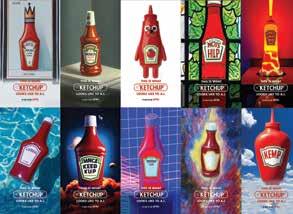
The idea: The brand sparked the debate around the ideal way to consume Kraft Dinner – using a spoon or a fork – by launching a limited-edition “Spoon KD” that replaced the fork that has been featured on its boxes for the past 50 years.
The backstory: “If you look at a company like Kraft Heinz in general, they have some of the most famous brands in the world. Kraft Dinner, in Canada, specifically, is a cultural institution. The brief was to make sure that the brand stayed that way. Often, the best way to reassert iconic status is to find ways to prove it, rather than just saying it. “Spoon KD” is a really good example of that. We sat down with real consumers and showed them the box. And the passion that people have for whether they should eat Kraft Dinner with a fork or a spoon is a real testament to just how beloved that brand is. Once the cameras were rolling, our job was to just get out of the way and let Canadians speak for themselves. (I’m a spoon guy. I make it a little saucier, so I need to get all the sauce.)”
> < < 19 Spring 2024

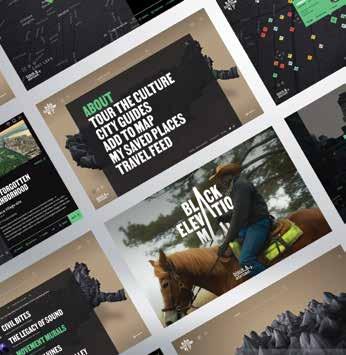
Behind a data-forward campaign
After Black-owned businesses were disproportionately affected by the pandemic, Black & Abroad created “The Black Elevation Map” as a tool that visualized Black cultural data as an elevation. The map reveals where Black-owned businesses and cultural institutions are most likely to be present or absent. Users could then explore the map through curated city and national guides. In his words, the CRC’s #5 CCO Ian Mackenzie at McCann (formerly Performance Art, the agency behind the work) shares how the #2 Brand elevated Black culture via the uplifting map.
Why Black & Abroad shifted toward local tourism
“Traditionally, the company had a business model built around international tourism. But it was mid-pandemic, and travel was decimated. We strategically saw an opportunity to build out its credentials around being a domestic travel brand. Our partnership had been tech-forward even before this. We did a program called “Go Back to Africa,” which was heavily into data and some AI. And so we wanted to bring those worlds together: How do you reactivate Black & Abroad as a domestic travel brand? And how do we continue to push as a technological innovator? That was our challenge.”
A 1930s travel guide for African American roadtrippers planted the seeds for the idea
“We looked at the history of domestic travel for members of the Black community in the U.S. and came across the Green Book, which was a black
travel guide during the era of Jim Crow laws so they could travel safely. And our early idea was, can we do something that is like a modernized Green Book? But we realized that there was a lot of IP, and we didn’t want to simply redo a new Green Book.”
The idea wasn’t the result of a brainstorm, but of defining a problem the Black community faces
“We knew there was an ongoing conversation around trauma narratives in the U.S. and the brand has been relentlessly positive in the face of that. So the idea to create an elevation map of black businesses, cultural institutions and populations struck us as a powerful metaphor and a way to organize vast amounts of data in a compelling package. When the map popped up as an adjacent approach to the editorial Green Book idea, it was pretty clearly the way forward for us. It just seemed to solve a lot of the friction points.”
How they found the right data points to build a program that was national at scale
“Data can be a potentially scary word, but it’s just information. And there’s a lot of it just lying around. But you have to be choiceful about what data you’re using. We went on a data discovery and decided that Black-owned businesses were going to be an important data source. We thought about how to get that scale nationally and we found sources on Yelp. It had a field where businesses could identify as Black-owned, and Google Business also had an indication for doing that. Another data source was Black population data. There was a great decennial census in 2020 that we dialed into. It doesn’t mean that those data sources included everything but it was a reasonable and good source set.”
Diverse representation helped to avoid bias in the process of data sourcing
“We had a team across every discipline that reflected the brand’s audience, because when you’re trying to understand bias, having lived experience is important. But it’s also about making sure that it’s not just one person who has to stand for the whole community on a project. Making sure we had a diverse team that could return guidance at every stage was critical.”
Ian Mackenzie McCann (formerly Performance Art) #5 CCO
Black & Abroad #2 Brand
20 strategyonline.ca
Mastering the dance between human ingenuity and technological evolution
Despite cautionary messaging, top advertising creatives say they’re not worried about AI.
Has anyone been able to forget recent alarmist artificial intelligence vs. human articles yet? The Washington Post told us about the misfortunes of two copywriters in “ChatGPT took their jobs. Now they walk dogs and fix air conditioners.” How about this Business Insider one? “Workers are worried about AI taking their jobs. Artists say it’s already happening.” Or this one in Firstposts? “Ad agency replaces copywriters, designers with ChatGPT and other AI tools.”
So, is the Boogey AI really here?
Some of the top professionals on this year’s Creative Report Card believe we’re still a ways away from needing to worry. They see AI as a good research assistant rather than a shiny new person turning them into the ex.
“I doubt that we’re at the stage of having everything being systematized by a machine. Good writing has soul, AI will never have that,” says Xavier Blais, ECD and partner at Rethink and #2 CRC Creative Director. “The thing that AI does well is priming, like putting a coat of primer on the wall. It does it at an acceptable level, which can serve as a base when you have writer’s block.”
But the use of AI in the advertising sector is becoming more prevalent. And as agencies and brands look for ways to streamline processes and enhance efficiency, AI is emerging as a powerful tool.
“As it develops and becomes even more advanced, it’ll be similar to Photoshop or 3D-printing – a tech tool that helps creatives express themselves and bring ideas to life,” suggests Zachary Bautista, partner and CD at Rethink and the CRC’s #1 Art Director, who’s worked on campaigns for Kraft Heinz, Scotts and TIFF.
But creatives, as a result of the innovation, are finding

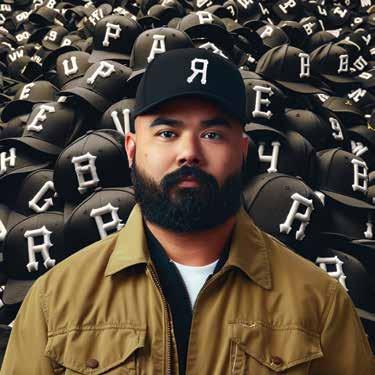 Xavier Blais Rethink #2 Creative Director
Xavier Blais Rethink #2 Creative Director
21 Spring 2024
Zachary Bautista Rethink #1 Art Director

themselves in increasingly uncharted territory. While some have legitimate concerns about such things as biases, others are fascinated and excited about unlocking its true potential.
“There’s an optimism welcoming AI in advertising and seeing it as this positive innovation in the industry. I’m not the most techsavvy creative, so I’m cautiously introducing it into my workflow – using things like the generative AI function in Photoshop or Midjourney to fill a presentation deck. It’s one of those inevitable things, so you have to jump on it or get a little left behind,” shares Skye Deluz, creative director at Broken Heart Love Affair and the CRC’s #2 Art Director.
Leveraging AI in an industry that prides itself in genuine creativity seems to have sparked a variety of emotions – fascination, curiosity, and, for some, a touch of apprehension about what it can do. Regardless, the most pervasive sentiment is that AI can definitely be included in their arsenal.
UNVEILING AI’S POSSIBILITIES (AND UNDERSTANDING ITS LIMITATIONS)
“I remember the first attempts were funny,” says BBDO’s Olga Netaeva and the CRC’s #3 Art Director, about the early stages of the tech. “It was generating six
fingers or three fingers or a really distorted arm. AI has improved dramatically, however, in the past few months. It also depends on figuring out the right prompt to get the result that you need.”
Some brands are using AI for their campaigns in direct ways. For example, Kraft Heinz released the “Ketchup A.I.” campaign by Rethink and KitKat’s “Have AI Break, Have A KitKat” work by Courage – which capitalized on a study that stated AI is more effective if you tell it to “have a break” first – sit at the forefront.
“AI is unlocking a lot of creative opportunities, a lot of amazing things that have never been done before,” says Netaeva, who has worked on brands like Muskrat Magazine, DoorDash, and Kijiji. “It’s interesting to explore the possibilities. What is it capable of doing? Where are the limits?”
AI is seen by many as a catalyst for creative exploration or discovery, rather than a threat to job security. The evolving relationship between AI and human creativity is an opportunity to automate routine tasks, freeing up creative minds to delve deeper into big picture thinking.
“AI [eliminates] putting hours into crafting images and mockups for presentations. When you’re able to cut that out, you get to the concepts and ideas,” explains Deluz, who has worked on award-winning Rethink campaigns for Heinz Ketchup, KitKat and YWCA Metro Vancouver.
Some copywriters are using AI to expedite certain aspects of the creative process as well, from generating initial drafts of copy to researching and summarizing complex topics. This then allows them to focus on the more nuanced and strategic aspects of the work.
Rethink’s Blais, who helped lead award-winning campaigns for global brands like Decathlon, Molson Coors and IKEA, explains that AI helps creatives get to the “flow state” faster. Blais tried brainstorming with ChatGTP, asking it to come up with some buzzy ideas about cream cheese. “It was all garbage. But, still, there was a sliver of [an idea] in there, [which] made me think, ‘Ah, that could serve as a stepping stone to something.’ It’s someone, or something, to bounce stuff off of when you have nothing better.”
AI, in its current state, can’t replicate the soul that resonates in well-crafted copy. According to Hemal Dhanjee, ACD at Courage who landed in the CRC’s #1 Copywriter spot, AI “is really good at spitting out copy iterations. But it’s really bad at ideas. You can ask ChatGPT to write you a screenplay like Scorsese, but it can’t write you good film. It’s very surface-level.”
The essence of great advertising and copywriting lies in profound insights into human nature, and AI lacks the authenticity that comes from lived experience. For example, AI can’t come up with Snickers’ “You’re not you when you’re hungry,” muses Dhanjee. “AI can’t create that yet. And that’s simply just because it doesn’t
22 strategyonline.ca
Skye Deluz BHLA #2 Art Director
have the ability to produce original thought. That explains why we gravitate so much toward awardwinning work,” he says. “Because it’s totally different and has an effect on you.”
But that’s not to say Dhanjee doesn’t think it has benefits. The role of AI, as he sees it, really isn’t to come up with the next best ad idea. For now, AI helps with research and providing digestible information on different topics. For example, while working on a campaign for a big banking client, Dhanjee is learning about complex financial concepts like Tax-Free Savings Accounts (TFSAs). “With Google, you type in TFSA and it’ll give you a big jargony definition. But with AI, I can say, ‘Explain TFSAs to me like I’m five.’ And it does.”
It’s not surprising though that when ChatGPT was launched to the public in 2022, everyone’s initial reaction was to worry about their jobs being taken, forgetting that AI has been in the works ever since Alan Turing imagined it in 1950 in his seminal paper Computing Machinery and Intelligence. However, says Bautista, “it will not replace human creativity, it can only execute on creative ideas. Advertising is a very human business. There needs to be a creative person in the driver’s seat to create meaningful and relatable work.
NAVIGATING CHALLENGES AND
AI learns from the data its fed, and if that data contains inherent biases, as does most of human experience, the generated content can reflect and perpetuate those biases. AI is not discerning.
 Hemal Dhanjee C Ourage #1 Copywriter
Hemal Dhanjee C Ourage #1 Copywriter
“The scary thing is that it’s like a magnifying glass of our flaws,” shares Blais. “In French, there’s two genders. And there’s a grammatical rule that stipulates the masculine form always wins when there’s an adjective. My fear is that AI doesn’t have judgment when it comes to these kinds of issues.” And the absence of judgment in AI can lead to outputs that lack equity, diversity and inclusion.
Simply put, we need to be mindful of what we feed AI, but more so what it feeds us back. “It’s sad when you think about it that way; that what AI generates is a reflection of where we are as a society. The prejudices that exist are baked into all this data,” adds Deluz.
When it comes to these considerations, Dhanjee, who’s worked as a copywriter at agencies Performance Art, FCB/Six and John St., and on brands like Black & Abroad and KFC, says: “I feel like the onus always falls on the marginalized to inform and kind of make sure that we’re represented in a way that’s human. And that’s a very valid concern with AI. Does it interpret the meaning? Or is it just taking words at face value?”
And, of course, if we’re not careful, AI can reinforce societal stereotypes. The struggle to balance innovation with ethical responsibility is critical, particularly when considering issues of
race, gender and age representation.
“Like most emerging technologies it takes time for everyone to get acclimatized,” says Bautista. “AI models are constantly being updated and the data it learns from is expanded to avoid these concerns in the future. It’s not perfect but it’s getting there.”
Contrary to fears of obsolescence, the creatives at the top of this year’s CRC see a future where agencies that focus on big ideas and push to keep up with innovation will thrive alongside AI. But, of course, this ongoing conversation is not just a professional one but an inherently philosophical exploration of the intricate dance between human ingenuity and technological evolution. It’s clear that used in the right way, it can augment human potential rather than overshadow it.
So, sure, it might steal some jobs that aren’t necessarily adding enough value to begin with. However, “it won’t steal the judgment of years of writing, years of concepting. If we’re not doing better than AI, then what are we even doing?” asks Blais.
In any case, whether AI yields threat or possibility, he has advice for up-and-coming creatives that will serve them: “After mastering the craft, bolster your creative palette – go to the museum, watch movies like Midnight Cowboy.” Do what AI can’t: simply live.
23 Spring 2024
BIASES

A quick-fire quiz with the top designer
Methodology
Strategy’s Creative Report Card tallies the awards given to agencies, advertisers, creatives and strategists over the past year. We select a range of shows that incorporate a variety of media and assign every award a point value, weighted to recognize that international shows are bound to be tougher to win than regional ones.
We build a database of wins for each advertiser, agency, CCO, CD, AD, CW, designer and planner, and tally them to determine a ranking in each category. (Note: this accounts for thousands of individual awards and relies on the credits published by the shows. Therefore, there is room for error and/ or omission.)
What’s a fun fact about you?
Through college from 2016 to 2020, I worked as a background actor on movies and TV. I was on The Handmaid’s Tale at one point. And then I worked on Nightmare Alley with Bradley Cooper.
What is your creative process?
It’s a lot of sketching and coming up with completely outlandish and ridiculous ideas. Earlier on I was hoping that things would just come super easily; that the first thing I tried would be a genius, perfect execution. But there’s more to it than that. Lots of trial-and-error, taking breaks, walking away and sleeping on it.
What is the biggest challenge you typically face?
As a designer, you’re inheriting other people’s work or inheriting a project at a pretty late stage, and I think your timelines are not always taken into account. It becomes this mad dash to finish when in reality you’re one of the most important people touching it. But a lot of designers might be like me and claim they do their best work at 3:00am the day before it’s due. Maybe it’s just something to embrace.
What is the most impactful advice you’ve ever received?
One of my university professors told us to “embrace boredom.” That has really stuck with me. If I have a 30-second break, my knee jerk reaction is to pull out my phone and watch TikTok. But some of your best ideas come from just letting your mind be quiet and wander where it wants to go.
How do you use AI in your work?
I recently spent an hour scouring stock sites for the perfect image of steam for a mockup in a pitch deck. I eventually turned to Photoshop’s Generative Fill and the output, created within seconds, was actually pretty damn good. I don’t rely on AI for final designs apart from the occasional retouching, but for designers who are considered extraordinarily efficient, it can be a great ally.
SCORING
Point values are highest for international awards, followed by national then regional. Best of Show and Grand Prix receive more points than Gold, which receives more than Silver, etc. We reserve the right to review and/or change the weight of awards each year based on their level of prestige and difficulty.
AGENCIES
The points for agency offices in multiple cities are combined. Distinct but affiliated agencies (with the same parent) are listed separately, unless considered a single entity by the agency. If two agencies are listed on a single campaign, each receives the same points.
INDIVIDUALS
Points are awarded to the individuals credited in the award show books. If a name isn’t listed,
the individual receives no points. In some cases, agencies have provided corrections, which have been taken into account on a case-by-case basis.
ADVERTISERS
Points are awarded for the brands as listed in the awards annuals. Sub-brands or brand extensions are grouped together under main brand.
THE AWARDS THAT COUNT
Regional: ACE, Ad Rodeo, ICE Awards IDEA Awards
National: ADCC, Applied Arts, AToMiC, CMA, Marketing Awards, SIA Awards, Strategy Awards
International: Cannes Lions, Clio Awards, Communication Arts, D&AD, Epica, One Show
Emily Plewes Pine #1 Designer
24 strategyonline.ca


















Go beyond your network. Tap into strategy’s dedicated marketing, media and creative audience to find your next star hire. strategyonline.ca/careers
the 2024 AToMiC awards
The AToMiC Awards brings together the best of advertising, technology, media creativity and content –celebrating the bold ideas that meet cultural moments and disrupt the status quo. > This year, the Gold award-winning brands did so by staking a claim in their perceived weaknesses; in some of the defining crises of our time; and even in their own brand identities. > Even the Grand Prix-winning campaigns staked their claim in making the world a more inclusive place. > Read on to learn more about the top winning work at this year's AToMiC Awards, which took place on March 5 in Toronto.
BY WENDY KAN
26 strategyonline.ca

Inclusivity comes first
How this year's Grand Prix winners brought diversity to the streets and to TV screens.
As the industry continues to acknowledge diverse perspectives and experiences, embracing inclusivity has become a focal point for many brand campaigns. When done well, it’s a win for the brand, but more significantly, a win for those who have long found themselves on the margins.
In the case of AToMiC Grand Prix and double-Gold winner “Runner 321” by FCB, Adidas sought to break barriers for marginalized communities and bring to life its tagline, “Impossible is Nothing.”
As part of Adidas’ goal to partner with the world's best, most diverse, athletes, it sponsored Chris Nikic, the first athlete with Down syndrome to complete an Ironman. As the first globally sponsored athlete with Down syndrome, Nikic showed what’s possible for neurodivergent athletes.
The campaign goal was to go beyond a single individual and create a movement
that would increase the visibility of neurodivergent athletes within the world’s most accessible sport: running.
With so many sports greats known for their jersey numbers (Michael Jordan’s 23, Lionel Messi’s 10, Wayne Gretzky’s 99) Adidas created the first number to symbolize an entire community of neurodivergent athletes. It put out an ask to the world’s major marathons: reserve bib #321 for a neurodivergent athlete who qualifies. The number signifies the Trisomy 21 chromosome present in people with Down syndrome.
The campaign launched in the fall of 2022 with a video featuring Nikic, a social campaign encouraging major marathons to include a “Runner 321,” and a website that offered a “Runner 321” toolkit with race instructions and social posts. Activations took place at the New York City and Boston Marathons, with a takeover of the New
York Adidas store on 5th Avenue, and also at cheering sections at mile 3.21. Once Nikic completed the Boston Marathon, he handed his bib to the next “Runner 321,” Kayleigh Williamson, for the 2023 race.
As a result of the program, six of the world’s major marathons (Boston, New York, Tokyo, London, Berlin and Chicago) reserved bib 321 for a neurodivergent athlete, despite four of them being sponsored by Adidas competitors like Nike, New Balance and Asics. More than 278 athletes, and counting, have signed up to be the next “Runner 321,” and more than 250 races have committed to adding a “Runner 321.”
While Adidas aimed to embrace inclusivity on the streets where marathons take place, #Elimin8Hate sought to make a difference on everyone’s screens. With Citizen Relations, it launched the “ReClaimYourName.dic” campaign, which
grand prix 27 Spring 2024
public service grand prix

took home the Public Service Grand Prix, as well as three Golds and four Silvers.
The goal was to eliminate the red line that appears under non-English names in computer software, in order to combat name discrimination. It also wanted to empower Asian Canadians to reclaim their original names, since many often adopt anglicized names.
The custom dictionary of Asian names contained more than 8,000 unique monikers from over a dozen countries, sourced from online name registries, national census data and Canadian cultural associations, and was offered as a free .dic file in Microsoft Word. Asian Canadians who visited the campaign website could download the file and add their own names to the dictionary to further expand the databank.
The launch video featured interviews with Asian Canadians sharing their experiences of name discrimination, followed by real-time reactions as they saw the red underline disappear from their name after downloading the dictionary.
The campaign was further amplified through wild postings and transit shelter ads, which were placed in high traffic locations throughout Toronto and Vancouver. Earned tactics included strategic media relations with Elimin8Hate spokespeople and personalized campaign t-shirts were sent to influential Asian Canadians.
NameReclaim.ca secured more than 10,000 website impressions and hundreds of direct dictionary downloads. And last year, Microsoft adopted the plugin in a global update.
Breaking through
KitKat and Rethink's “Iftar Bar,” which claimed a Gold and Silver AToMiC, was a direct acknowledgment of the almost two million Muslims in Canada who participate in a holiday ritual – fasting during Ramadan, and then breaking that fast at the end of each day. KitKat has long associated itself with taking a break, and Iftar, which refers to the meal that happens daily at sundown during Ramadan, is the ultimate break.
While the classic KitKat bar consists of four fingers of chocolate, the “Iftar Bar” consists of 30 pieces, designed so that a single piece could be enjoyed each evening during Iftar. As each piece is broken off, a calendar was revealed underneath to show how far along people are in their fast. The bar was also divided into three parts, reflecting the three stages of Ramadan called Ashras.

No less attention was paid to the external packaging, which featured geometric patterns inspired by Islamic architecture. The lunar calendar also served as inspiration, with the packaging featuring iconography of the 30 phases of the moon.
To reach the Muslim community, the Nestlé brand partnered with creators to host giveaways on Instagram. With no paid media, the “Iftar Bar” went viral, with over two million impressions after only seven days. The bar was so popular that calls were made to make the “Iftar Bar” available worldwide.
28 strategyonline.ca
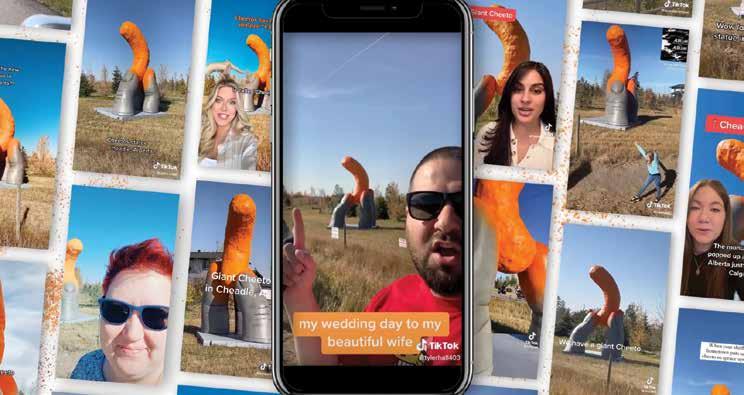
Transforming a weakness into strength
Brands that reframed their challenges to highlight their resilience.
Sometimes, there’s no point in fighting against a trait that inadvertently defines a brand or becomes strongly associated with it. Instead, finding creative ways to transform a perceived weakness into a strength can win over consumers. By tackling and reframing challenges transparently, brands demonstrate self-awareness, authenticity, an ability to adapt and, oftentimes, a much-appreciated sense of humour. When done right, it’s a strategic approach that builds trust.
Such was the case with “Cheetle in Cheadle,” a campaign by Citizen Relations for PepsiCo Foods to refresh the brand after Cheetos sales in Canada began to plateau in 2022.
The brand discovered that its audience had evolved: only 22% of households that purchase Cheetos have kids. This signalled untapped potential for the brand to generate top-ofmind awareness with adults. But rather than downplaying the distinctive, polarizing, messy orange dust left on fingertips that is inherent to the Cheetos experience, they decided to embrace it.
Now, they just had to get the word out that, unbeknownst to most people, the dust actually has a name – Cheetle.
To get the attention of adults, the team considered how we, as a culture, demonstrate our love and affection for things. Another consideration: Alberta appears to have a peculiar penchant for oversized food landmarks. The village of Vilna features giant mushrooms and the town of Mundare boasts the world’s largest sausage. So when Cheetos discovered an Albertan hamlet (home to a mere 83 people) called Cheadle, the brand realized it wouldn’t be completely out of place to add a monument that memorialized the orange dust. But unlike the other food-related statues, they would get to place it in the town of a similar name.
The brand created a 17-foot-tall statue of Cheetle-covered fingers holding a single Cheetos Puff and, without any notification or fanfare, erected it along the town’s main road in the fall of 2022. On the first day, residents expressed their confusion via social media. It took little time before the news spread around the hamlet, Alberta and the country.
The statue attracted thousands of people, with some even travelling from out of province – one fan flew over 2,400 km – to take a selfie with the “Cheetle in Cheadle.” Even award-winning Canadian singer-songwriter K.D. Lang posed with the statue, posting: “This resonates with me.”
After several days, the brand announced that it was responsible for the statue, which in turn generated a wealth of media coverage. What began as a regional story went national, then North American, and finally global. Cheetos Puffs in the surrounding area were snapped up as a number of people took
29 Spring 2024
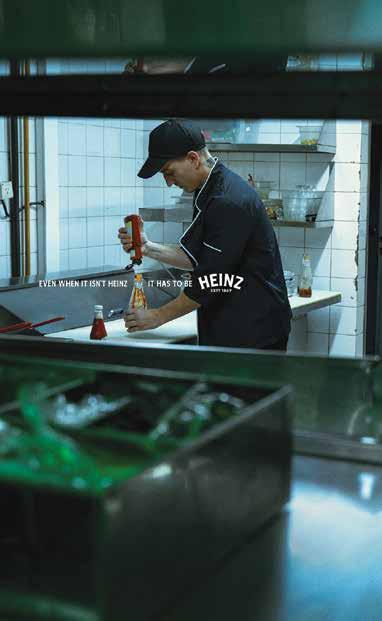
advantage of the selfie photo op.
Fans updated Cheadle’s Wikipedia page with the statue and designated it a “historical landmark” on Google Maps, also becoming the top-rated landmark in Alberta. Fans even requested actor Don Cheadle visit the statue.
The campaign – which won four AToMiC Golds, two Silver and a Bronze – tracked 2.2 billion impressions from media coverage, including CNN, CBC, CTV and Global News, as well as the late night talk shows of Seth Myers, Jimmy Fallon and Jimmy Kimmel.
“Cheetle in Cheadle” earned 1,111 traditional hits and 783 earned social hits, making it the most successful PepsiCo Foods Canada PR campaign in a decade. “Cheetle” mentions increased by 1,750% – there was a 17% shift in positive sentiment, a 47% increase in regional sales of Cheetos Puffs snacks, a 23% increase in national sales of Cheetos Puffs snacks and the campaign delivered $33 billion in media value.
Building on the statue’s success, PepsiCo Foods recently created a similar 16-foot monument to celebrate the NHL All-Star Weekend that took place in February – the first time the event was held in Toronto in 24 years – with the fingertips replaced by a Bauer Hockey glove and placed in the Roundhouse Park.
With a single stunt, Cheetos introduced the word "Cheetle" to the general population and drove significant growth by transforming a perceived downside into a distinctive brand asset –one that has potential to live on in different iterations.
In the case of “Heinz Fraud Ketchup,” by Rethink and Zeno Group, the campaign was the result of an unsettling realization that rising food prices were not only driving some restaurants to switch from Heinz to cheaper, alternative ketchups, but that restaurants were refilling Heinz bottles with generic brands.
So how does one convince restaurants that “It has to be Heinz?” With 77% of people preferring Heinz when dining out, the brand used traditional B2B tactics in favour of leveraging its fanbase, while also capitalizing on the general restaurant rule that "the customer is always right."
Social listening revealed that fans were dismayed when they went to a restaurant and found a Heinz bottle filled with non-Heinz ketchup – a trend that was captured across Reddit, Snapchat, TikTok and Instagram. But instead of shying away from the truth and their fan’s disappointment, Heinz embraced the phenomenon and labelled it as “Ketchup Fraud.”
The intention of the integrated campaign wasn’t just to highlight the commonplace act, it also set out to end the unethical and misleading practice. The work featured caught-in-the-act style assets and provided a fun twist on its tagline: “Even when it isn’t Heinz, it has to be Heinz.”
Social, DOOH, print and video assets were used, and placements included high-impact DOOH in both New York and Chicago, along with a New York Times full-page feature and placements in US Weekly, InTouch and Life & Style
Once the word was out, Heinz turned to social media, pointing fans to a website where they could submit which restaurants were committing “Ketchup Fraud” in order to help put a stop to it. Even restaurants could submit their names, anonymously, on the site. Heinz then reached out to those restaurants to help them start serving its ketchup.
The campaign garnered over 438 million impressions, drove 92% positive sentiment, exceeded the social engagement rate benchmark by 128 times, and brought to life hundreds of first-hand experiences with “Ketchup Fraud.”
Heinz gained 33 new accounts in under a month, including several independent mom and pop-type restaurants – equalling a total of over $250,000 in gross sales volume – while also resigning Boston’s iconic Fenway Park.
In addition to gaining new accounts, Heinz increased sales by 8% and gained 0.6 points in market share versus the previous year.
Ultimately, Heinz tapped into an insight that resonated with fans, rallying disappointment into action and leading to a win for both consumers and the brand – which left the AToMiC stage with a Gold and three Bronze awards.
30 strategyonline.ca
Responsible business strategies
Aligning a brand's mission with meaningful causes.
Brands are showing their commitment to social responsibility by addressing some of the most pressing issues of our time. Indeed, aligning their mission with meaningful causes can lead to powerful campaigns. When successful, such work can gain traction among those who gravitate towards purpose-driven advertising, creating a strong connection between the consumer and the brand.
Unilever’s Dove launched double AToMiC
look perfect and match what they see on social media, with 53% of girls reporting hating their bodies.
To fight the devastating "Cost of Beauty," Dove highlighted the scale of this social media-induced mental health crisis while also inspiring the world to save kids from the consequences of toxic content. Their solution? A single, shareable film to get viewers to sign the petition to support the Kids Online Safety Act.
To tell the story of a real teen survivor,

Gold and Silver winning campaign “Cost of Beauty,” by Ogilvy, to drive attention to the mental health issues kids are experiencing due to toxic beauty content on social. Such issues include anxiety, depression, selfharm, eating disorders, PTSD and suicide.
The statistics are disturbing. Toxic beauty content is devastating the mental health of three in five kids, throwing an entire generation into crisis. The majority of young girls say they feel the pressure to
the team found Mary, who almost lost her life to an eating disorder. However, they didn’t need actors, a set or camera crew. Mary had already documented her life with photos, videos, and journal entries over a decade. From her material, Ogilvy crafted 14 years of her life into 115 seconds.
Set to a female rendering of Joe Cocker’s song, “You Are So Beautiful to Me,” the video demonstrated how quickly social media contributed to Mary’s distorted view

of herself, leading to a decline in her mental health. In the end, the video reveals this isn’t just the story of Mary – it’s the story of millions of girls. The film concludes with a call to sign the petition in support of the Kids Online Safety Act.
Due to the sensitive nature of the subject, the film soft-launched organically in the spring of last year - and immediately went viral. In just 10 days, there were 28 million organic views, over 9.13 million video views on Dove’s owned channels (Instagram, TikTok, and YouTube) and an increase of 16,700 new followers – a 157% increase compared to the previous period.
It is also Dove’s highest organically viewed film. Earned media coverage garnered 2.5 billion impressions with 190 placements including NBC, Women’s Health, Teen Vogue and Breakfast Television. Dove has already surpassed its goal of converting more than 50,000 petition signatures in support of passing the Kids Online Safety Act, averaging 300 signatures per hour. The campaign is now moving into paid placement.
Tushy, a U.S. company that offers a bidet toilet attachment, sought to capture the attention of consumers and highlight the climate crisis in its own dramatic way, with its provocatively named “Asshole Activists” Gold campaign by Citizen Relations.
The goal was to convert Canadians from the lifelong habit of wiping their butts with toilet paper and turning them into
31 Spring 2024
bidet users instead. Their way in? The climate crisis. Eighty four percent of Canadians are grappling with, at least, a moderate sense of climate anxiety. But of all the eco friendly actions people take – adopting plant-based diets or reducing use of plastics – eliminating toilet paper isn’t top of mind.
While it might not seem like a big contributor to the climate crisis, one million acres of forest are logged every year to create toilet paper and it’s often made from up to 40% virgin pulp from Canada’s boreal forest – often referred to as the Earth’s lungs for its carbon absorption.
Tushy, meanwhile, touts the fact that its bidet toilet attachment requires 80% less toilet paper and saves 40 times the water than with traditional wiping. Although bidets are used daily all over the world, they're not a wellunderstood contraption in North America.
For its launch in Canada, Tushy set out to prove that making people uncomfortable can be good for business. To get the word out, Tushy was beyond cheeky, and decided that bidet users would use their butts – rather than their hands or voices – to combat climate change.
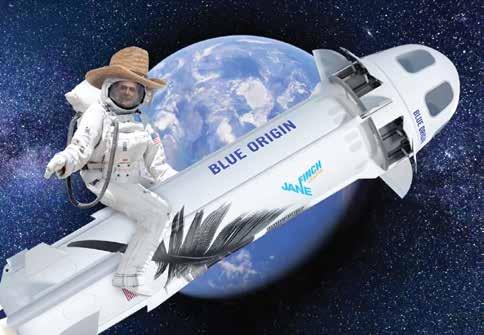
Bill
it to Bezos
The Jane/Finch Community and Family Centre, an under-the-radar community organization in a marginalized Toronto neighbourhood, launched the “Bill it to Bezos” campaign with Angry Butterfly in hopes of raising $20,000. But without a global brand or name recognition, and with competition from other non-profits, how do you get the attention of potential donors?
Rising income inequality creates a poverty reinforcing loop: increasing the need for donations, while reducing people’s ability to give. Since the people who are most passionate about income inequality are often those without the means to give, a campaign needed to not only raise awareness, but have a built-in donation mechanism to make it easy to give support.
The three-time AToMiC Gold-winning campaign took advantage of a loophole in Twitch, where Amazon Prime Members get a free $3.50 to give to a streamer. If the $3.50 isn’t used, it goes right back to Amazon, and its founder Jeff Bezos. So Jane/Finch Community and Family Centre became a verified Twitch streamer, allowing people to subscribe to the channel and donate money in a way that’s 100% funded by Amazon.
The annual fundraising goal was reached in less than five days. Also, significantly, the campaign allowed the centre to enter the conversation about income inequality and tap into the groundswell of discontent against corporations that do little to benefit the communities their workers live in.
Canadian environmental photographer Ara Coutts was hired to take close-up artistic portraits of the assholes of 20 Toronto-based bidet advocates and Tushy fans. The photos were then displayed in an “Asshole Activists” gallery.
To spread the word, media and influencers were invited to a preview one day prior to opening to the public. The gallery featured art, installations and information about the environmental benefits of a Tushy. Model activists were in attendance, as was Tushy’s founder, Miki Agrawal. Media leveraged the experience of the gallery for social content as well as for interviews to inform stories that were published nationally. Priyanka of Canada’s Drag Race shared social content from the gallery, and North Americans entered a contest to win their own asshole photoshoot in Toronto.
The campaign was amplified through Tushy’s owned social channels and through the dedicated campaign website. PR efforts were ongoing in the lead-up to World Environment Day, with earned media outreach across North America.
The campaign generated 301 media placements, 201 social hits, 243.7 million impressions across Canada, 6,500 visitors to the website and 136 entries to the contest. The gallery saw more than 600 visitors during the one day it was open to the public.
Tushy also saw impressive business results tied to the event, achieving a 285% increase in Canadian sales yearover-year, 155% more Canadian website sessions and a 521% increase in promo code usage.
A National Post interview with Agrawal and Coutts led to same-day sales across Canada increasing by three times the normal run rates (almost immediately).
32 strategyonline.ca


When font design takes on a life of its own
Purposeful design that goes beyond simple aesthetics.
When it comes to brand identity, a font style can serve a complex function. And while letterforms, spacing and style all play a role, a purposeful font design can go beyond simple aesthetics to convey both emotions and a message.
The Royal Ontario Museum (ROM) wanted to attract a younger and more diverse audience, so it enlisted Leo Burnett to help transform its brand into a dynamic presence.
The museum has a lot to offer: it’s Canada’s largest museum, as well as a worldrenowned institution of art, culture and natural history; and its expansive collections feature over 13 million artifacts. Yet those attributes were apparently not enough to attract the audiences ROM was looking to reach.
As a result, the new brand identity had a lot to reflect and represent. Its design had to capture the enormous scale of ROM’s collections – objects ranging from prehistoric civilizations to modern art. It had to house a wide range of content from different cultures
33 Spring 2024
and time periods. While ROM carries a lot of history, the design needed to exude boldness and project a contemporary feel, while also feeling timeless. And finally, the new identity needed to be adaptable for numerous applications, across museum signage, uniforms, editorial and advertising – essentially every touchpoint of the museum.
The concept began with the fact that the ROM captures the history of the planet: 13 million artifacts meant 13 million moments in time from the past 4.2 billion years.
The new identity, which won a Gold at AToMiC, regarded every object as a single stitch along that vast timeline. So the rebrand, in the fall of 2022, included a new wordmark, custom typeface and original photography. ROM Coign, the new typeface, was designed to evoke the timeline while also pushing the limits of condensed typography. Every character represented a single stitch in time, all knit together in one "Immortal" timeline. The typeface was able to expand and contract, to create the sensation of diving into single moments of history and to also zoom out to reveal its scope.



The launch kicked off with a Union Station domination, featuring custom photography with over 100 objects and artifacts in a dynamic timeline. The ROM itself, meanwhile, featured an event installation, where the timeline was projected onto the walls of the museum and enveloped visitors to make them feel like a living part of that timeline.
For posters and collateral, each piece acted as a single moment in history, but when viewed together, they represented the whole tapestry of the timeline. Visitors could even select a piece of the timeline from the museum shop to bring home with them.
When a study was conducted to understand the brand awareness, perception and brand health of the ROM, the results showed an increase in the museum as a top-of-mind venue, indicating positive results in its new branding strategy and visual identity.
Annual admissions also increased from more than 456,000 to one million, a year-over-year increase of 119%, reflecting the success of the brand’s refresh, programming and special exhibitions to draw in visitors. Ultimately, ROM’s new visual identity brought fresh energy to the museum.
In 2023, the Association of Registered Graphic Designers (RGD) tapped Rethink to provide a brand
identity for its RGD Branding Awards, a new program celebrating the best in branding and design from around the globe.
The AToMiC Gold-winning identity needed to attract a panel of international design judges and motivate design studios from around the world to submit entries. To celebrate the most notable global work in branding and design, inspiration was drawn from branding’s most overlooked symbol: the registered trademark (®).
A custom typeface was designed called Registered Grotesk, using nothing more than the trademark symbol. It featured more than 160 unique characters, multi-language support and a host of OpenType features.
A dynamic suite of graphics was created for static and moving executions –exclusively using the registered trademark system – and used in both print and digital materials. The symbol was also used to painstakingly recreate portraits of each of the judges, providing them a bespoke asset for social media.
Ultimately, nothing but the symbol was used to create the entire brand system. Upon launch, the new identity helped RGD attract a line-up of jury members from around the world.
Reception from the design community was positive, including that of Brand New, the leading source for opinions on branding and identity design. The new identity won a Design Lion in the "Creation of a New Brand Identity" category at the 2023 Cannes Lions, making the RGD Branding Awards one of only three entries from around the world to do so, out of a possible 985 submissions.
Most importantly, the design system helped RGD Branding Awards become the association’s most successful program launch to date, surpassing projected revenue from entry fees by over 200%.
34 strategyonline.ca
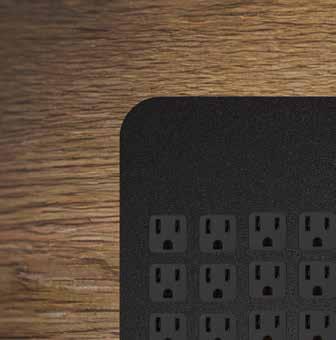








MORE WORKLOAD FOR US, LESS OVERLOAD FOR YOU.


When your team’s bandwidth is stretched to the limit, M&H is always open to input that will help increase your studio’s output. Our 160 artisans can solve pressing production needs and free up room for your resources. Plug in to the possibilities at mh.ca.


NEWESTABLISHMENT
The New Establishment is a celebration of the rising stars – junior to midlevel professionals – who are leaving an indelible mark on the marketing communications industry across Brand, Agency and Media. The editorial program acknowledges those who go the extra mile, pioneering new initiatives to better serve clients and pushing boundaries to deliver top-tier ideas. This year we have four winners. For Brand, we have Laura Douglas, Dove’s masterbrand lead for Canada. For Media, there’s Nikolas Paradis, team lead, digital at Omnicom Media Group (Touché!).
And for Agency, we have a tie: Nate Houseley, copywriter at Bensimon Byrne, and Daisy Qin, strategy director, content at FCB Canada. Read all about them, and what makes them standout, in the pages that follow.
YMEDIA• BRAND •AGENC
36 strategyonline.ca

Laura Douglas builds on Dove’s agile and culturally curious legacy
One quality that’s defined Laura Douglas’ creative work for Dove is agility.
When Douglas, Unilever’s Dove masterbrand lead in Canada, worked with Ogilvy to develop the CPG’s “Courage is Beautiful” campaign in 2020, it took just five days from inception to execution. On the “#KeepTheGrey” campaign two years later, she topped that mark at an accelerated rate of only 48 hours.
Quickly responding to timely cultural conversations is part and parcel of what Douglas values within marketing. And it’s proven to be successful, with her work bringing in industry accolades and helping to grow double-digit topline sales for the brand.
But along with that agility comes a commitment to community impact. “It’s not just about crafting really emotive campaigns or communications, it’s about making relevant change,” Douglas says.
“We started this approach of being an actionist brand and taking meaningful actions alongside the communications that we do. But this is something that’s innate to who I am as a human being and I came into the business world wanting to be able to create change with the brands and businesses that I work on.”
Douglas has worked on the Dove brand for eight years, nearly the entirety of the young marketer’s career. She started with
brand
Unilever as a customer development intern in 2014. And since 2016, Douglas has worked extensively on Dove, including working in brand manager roles for its hair and deodorant businesses, spending more than a year as a global associate brand manager in the London office, before moving up to take on the company’s masterbrand lead role in Canada.
Drawing from her experience across the brand, she’s developed successful Canadian-born campaigns with global reach. Her work with Dove helped it receive recognition as one of strategy’s 2023 Brands of the Year.
“Courage is Beautiful” – which featured the faces of frontline healthcare workers who worked tirelessly during the COVID-19 pandemic – was rolled out to 15 other countries after its Canadian debut and won nine Cannes Lions. Meanwhile, “#KeepTheGrey” responded to CTV National News anchor Lisa LaFlamme’s dismissal by encouraging people to go grey in opposition to ageism in the workplace. It was one of the most successful campaigns in Dove Canada’s history, receiving plenty of global coverage and online attention. It also led Dove to be offered a seat on the Ontario Human Rights Commission board to help advocate for women discriminated against in the workplace.
Douglas says her approach to marketing prioritizes delving into prevalent cultural topics that make the creative work stand out.
“We are in a society that has such a big attention deficit, especially after COVID,” Douglas says. “We’re all glued to our phones. I have less than two seconds as a marketer to get your attention. So is this going to be thumb-stopping creative as you scroll your social media feeds? Is it actually going to have you look up on the subway at an ad?”
Looking ahead, this year marks the 20th anniversary of both Dove’s Self-Esteem Project and its Campaign for Real Beauty, both of which work to build self-confidence in women and youth. Douglas is taking these anniversaries as an opportunity to reflect on how far the brand has come, and to speak with women and girls across the country to better understand how self-confidence issues have changed over the last two decades. That research is about ensuring Dove is still authentically connecting with its audience, Douglas says, and continuing a long history of Canada being one of the global brand’s outstanding markets.
“Everything that we do has to be ownable and authentic to the brand. But the newer piece that I wanted to add was about being timely and relevant in culture,” Douglas says. “How is Dove showing up, and how are we standing up for what we believe in, [and] in moments that matter to Canadians?” – By Andrew Jeffrey
C Y
37 Spring 2024
After nearly three years working as programmatic expert for Dentsu, Nikolas Paradis was offered a job at Omnicom Media Group’s Touché! as a digital team lead, where he would manage a team of 10 people.
“It was a big step, coming from being a type of one-man band, to leading people. That was quite the challenge,” Paradis says from his office in Montreal. “The first year was very intense. I had to learn not only how to manage people, but also how to be an expert in different fields of the activation performance landscape.”
But after being thrown into the deep-end like that, Paradis not only quickly learned how to swim, but, as a leader, found a way to drain some water so that the deep-end wasn’t so daunting. Metaphorically speaking, of course.
What Paradis actually did was introduce technology to a system that desperately needed it. He and his team were in charge of supporting the dealer network of Bombardier Recreational Products (BRP) – first in North America, then globally.
How Touché!’s Nikolas
Paradis made BRP’s media investments go further
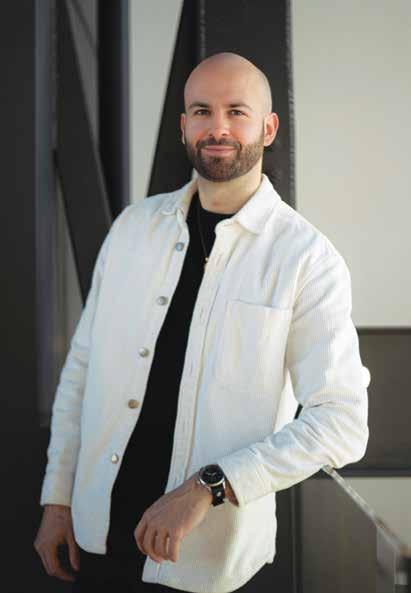
With more than 1,200 points of sale for BRP’s six main brands (Ski-Doo, Sea-Doo, Can-Am Off-Road, Can-Am On-Road, Manitou and Alumacraft), his job was like a word problem on a math exam: If each dealer needs a unique media campaign for each product segment sold, how many unique activations need to be managed annually? Answer: Around 10,000.
“There’s so much volume that we have to rely on technology to optimize what we do,” Paradis says. “We worked closely with Meta and their engineering team to build a beta program where we can use dynamic ads for all of our dealers and regroup all of their campaigns within one campaign.
“So we went from 3,000 campaigns to one campaign program. It was efficient on a production standpoint. We did not have to produce all the assets beforehand, we were able to use a Photoshop folder and basically dynamically change the aspect of the creative based on every dealership. So we were able to customize everything.”
Taking the initiative to work with Meta on its beta ended up generating 300 times more actions on the dealer’s website, Paradis says, making each dollar go further. In doing so, they were one among the first to use Meta’s program at scale.
“This technology has enabled us to automate the campaign creation process – geographical parameters, targeting, budget – as well as dynamically personalizing our messages for each dealer and brand,” says Guillaume Duhamel, director, digital at OMG. “None of this would have been possible without Nikolas’ great vision and leadership.”
Perhaps the clearest indication of Paradis’ performance is that, by the time you read this, he’ll have a new job entirely within OMG. He’s excited, not because he didn’t like being a team lead, but because he’ll get to do more of what he’s passionate about: making work easier. Only now, he’ll be helping clients more directly.
“I’m very excited. I feel like I’ll be able to bring all my performance background with more of a strategic vision and be more involved with clients,” he says. “And I’m very excited that [Touché!’s] clients [are] going to get that new role.”
– By Greg Hudson
media
38 strategyonline.ca

Bensimon
Byrne’s Nate Houseley has the versatility to tackle work across a range of industries
Oil-laden overalls aren’t typically part of an advertising creative’s career path. However, before switching to agency casual attire as a copywriter, Nate Houseley “liked cars a lot” and spent three years as an apprentice mechanic for a Honda Canada dealership, joking that he “lived out his childhood dream for a bit.”
Houseley admits he “kinda fell into” advertising, landing at OneMethod in 2019 as an intern. He eventually moved over to sister shop Bensimon Byrne, allowing him to apply knowledge from his previous job and eventually help organize the world’s largest amateur golf tournament, dubbed the Quattro Escape, for client Audi in 2023.
For someone whose vocational dreams originally lay elsewhere, he’s certainly thriving in advertising. Joseph Bonnici, chief creative officer of Bensimon Byrne and OneMethod parent Tadiem, says that he has seen Houseley’s innovative approach to advertising design and communication “time and time again.”
His “Receats” campaign for Good Fortune – a pro bono project that saw the restaurant disguise its menu as office supplies on UberEats and DoorDash so people could sneakily expense
their food during the pandemic – won 47 awards internationally. This included wins at Cannes, D&AD, the One Show and more.
Bonnici says Houseley is “a rare young creative who can adapt to any type of work, including very complex industries, like financial and automotive.” For instance, after his three-month internship, the creative was tasked with rewriting the entire Tangerine Banking app for Canada. “This saw him write 812 different screens to give people smiles while they saved, resulting in a client conversion rate that doubled,” says Bonnici.
And when Houseley was tasked with handling the Canadian Investment Regulatory Organization (CIRO) account for the agency, he took a very “structured” approach toward the technical project, with a heavy focus on research and reading, including frequently going down Reddit rabbit holes.
“At face value, CIRO can seem like this boring regulatory investment thing, but on the Reddit threads, people are really passionate about money,” he says. Reading people’s opinions and questions about finances on the platform inspired his approach in helping CIRO (which oversees investment and mutual fund dealers) with its brand positioning when it formed following the merger of IIROC and MFDA. His role was to bring the new brand to Canadians, and help them understand what it does.
Similarly, Casey House – a specialty hospital that cares for people living with and at risk of HIV – sits in a sector that’s also quite nuanced and, arguably, limited when it comes to storytelling. However, agency partners Bensimon Byrne, Narrative and OneMethod have consistently taken a radical approach to its “Smash Stigma” creative, in one instance, re-editing episodes of popular comedies Friends and The Office to share the serious message behind HIV transmission. For Casey House’s latest “Smash Stigma” effort, Houseley is currently in the process of creating the nonprofit’s fifth iteration, which Bonnici says “will be highly compelling and set a new bar.”
Houseley has “huge range” and an “ability to adapt his voice seamlessly” to all kinds of work, says Bonnici, which is why the copywriter “freely floats” across the three agencies, including Tadiem’s newly launched financial services consultancy, HiFi. “[Floating] is typically not an endearing term,” Houseley jokes, but he says it’s apropos as he’s interested “in a lot of different things.”
The plaudits don’t end there: Bonnici believes that, one day, Houseley will helm his own agency. “That’s really nice to hear,” says Houseley, who won an Applied Arts Young Blood award in 2022. “I like advertising a lot… leading an agency one day would definitely be really cool.” – By Christopher Lombardo
agency
39 Spring 2024
agency
When Daisy Qin graduated with a degree in Arts, Political Science and English Literature in 2014, she knew she wanted to experience something different.
Qin’s first job after university was at retail start-up Nuvango, where she worked as a digital strategist. It was that position that determined her professional future: “I had some mentoring talks there with some strategists from different agencies and realized that I wanted to continue on that path,” she says.
Soon after, Qin landed as a social content strategist at Grip Limited, eventually moving to FCB Canada. Her contributions quickly led to her current role as strategy director, content, where she has worked with clients like BMO, Destination Ontario and Sobeys over the past three years.
FCB’s Daisy Qin gives back as much as she takes in
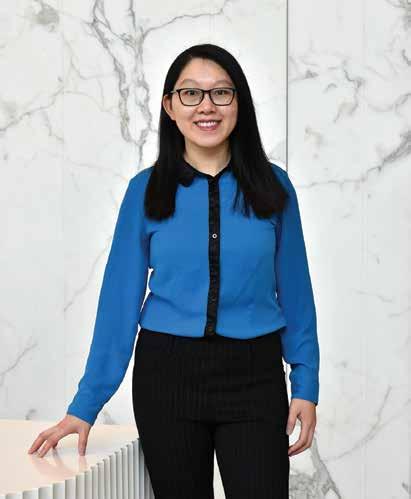
Those years taught her to prioritize content quality over quantity, she says, adding that “it’s easier now than ever to create a brand, but also there’s a lot more competition for attention. Companies can’t afford to get too comfortable now.”
For that reason, Qin has been taking the lead on a few digital initiatives for FCB clients.
One of the projects she is most proud of is for grocery delivery platform Voilà, which won several Cannes Lions and Effies awards. The work consisted of a campaign, “Trending 2 Table,” which tapped into viral food trends on TikTok: “We created a bespoke trend index to better predict which food trends would take off, and partnered with several influencers. They posted recipe videos on their TikTok channels. The videos drove users to a landing page with all the ingredients needed, making the purchase of the trendy recipe a seamless experience.”
Qin was completely hands-on, finding influencers and handling the entire content delivery process. That was the first time FCB managed an influencer program at this scale, all inhouse. Since then, the agency has expanded its service offering to include more influencer work. Qin’s interest in technology also led her to explore augmented reality, creating the agency’s first AR development capabilities and selling sets of filters to clients like Almond Breeze.
Beyond her day-job, she has been involved in initiatives like FCB Leading Women, where she has become a mentor. “It was so helpful for me to learn from mentors that I try to find ways to offer that same kind of help to those who are younger or in the early stages of their career. Sharing those learnings definitely has a lot of importance and value.”
Qin, who has won awards at Clio, SIAs, Strategy, ADCC and the CMAs, believes that her job should not be limited to helping brands. “Giving back to the community is also important.” She has participated as a speaker on panels for FCB’s DE&I committee, and has judged “The Verdict,” a marketing competition hosted by IPG Mediabrands and IMDOINGIT for young Black people, who work together for more than six weeks on real-world business challenges. Her interest in helping and giving to others has also motivated her to join FCB fundraising events such as ping pong and softball tournaments, as well as teaching part-time in Humber College’s Advertising and Graphic Design program. “I enjoy figuring out what path companies need to take to reach their ultimate goal. I think I’ve been really lucky in my career to have had a lot of really great mentors and I want to try to be that person for others as well.”
– By Andrea Hernandez
40 strategyonline.ca
The The
Collaborators New Collaborators New
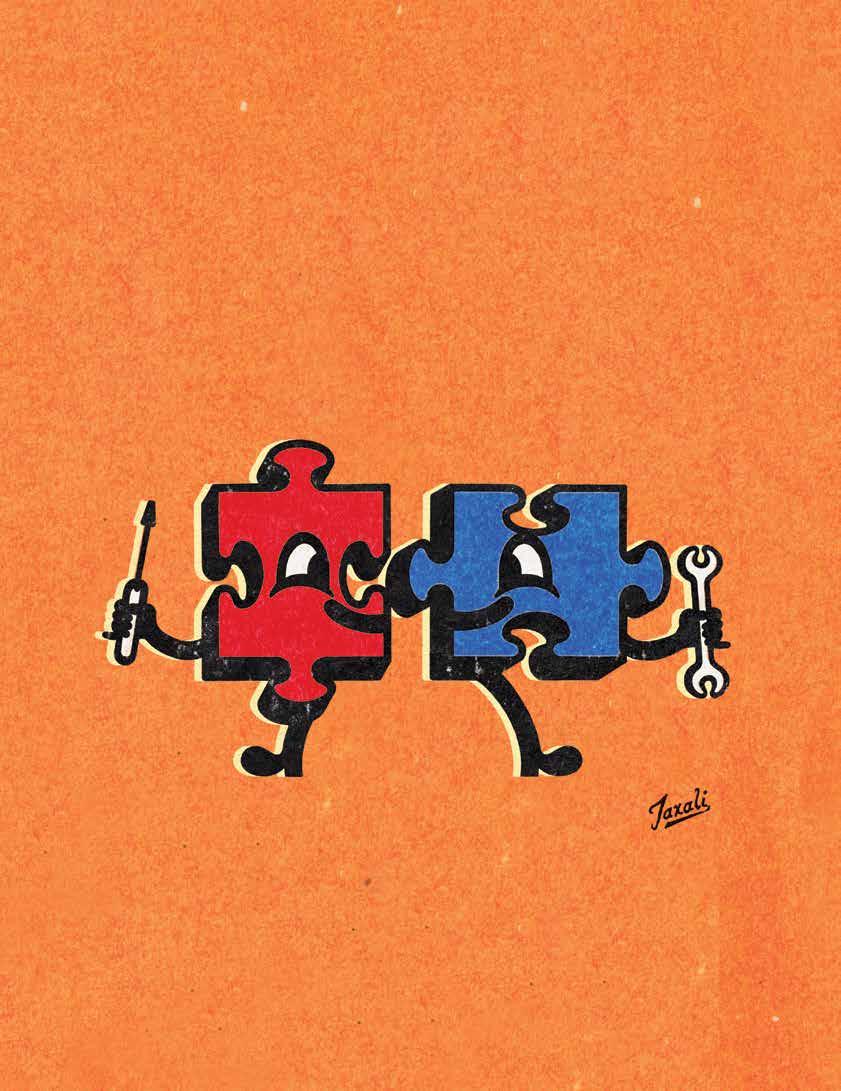
Increasingly, brands are being asked to move at the speed of culture, delivering the perfect message at the perfect time, on the perfect channel. And with the plethora of tools to master for each channel, sometimes it just makes sense to call in the subject matter experts. In The New Collaborators, we take a look at the content partners and specialist shops that are helping marketers keep up and stand out.
SPONSORED SUPPLEMENT | S 41
The power of connected creativity
Salt XC’s new collaborative model rooted in connection, commerce & technology

ABOVE: Toyota’s “Secret Roads” program drove targeted reach for the brands Gazoo Racing line-up with Salt’s Create for Creator strategy. Designing a socially rich experience for creators who generated high value and heavily targeted content with strong audience resonance
RIGHT: 1 “Protein That’s Pro-You” is about making protein accessible to everyone. The campaign uses real consumer product reviews as inspiration for content that is designed to connect. 2 In honour of Mike Vernon’s induction into the Hall of Fame, Mike’s Hard Lemonade recruited Mikes across Calgary to show the power of Mikes celebrating Mike, with Mike’s. 3 RBC and Avion Rewards partnered with Salt XC to manage the strategy, ideation and creative execution of an incredible surprise ticket giveaway program for Swifties across the country inspired by Taylor’s Eras. 4 Salt XC created an omni-shopper program called “Yum for all” for Kraft Heinz, rooted in building cultural relevancy as a brand that supports parents transitioning back to routine post summer.

CONTACT:
Jeff Rogers President jr@ilovesalt.com
IT’S NO SURPRISE THAT MARKETERS find the increasingly complex marketing landscape challenging to navigate. But where some see challenges, others see opportunity.
“Gone are the days when you bought TV, radio and print. The complexity of where you reach consumers has compounded significantly,” notes Jil Lohnes, EVP and partner at Toronto agency Salt XC. “You need more disposable content, to move faster, to build conversationally relevant brands, but budgets and timelines aren’t growing – it’s putting a lot of pressure on brands to perform.”
This is the space Salt wants to fill. “We’re able to provide impactful and simple solutions – if it feels too complex, it likely is, and we are here to help clients solve that,” explains Leanne Bernardo, EVP and partner at the agency.
Established in late 2019, Salt is now over 250 employees specializing in creative, design, strategy, creator/social, media, omni-shopper,
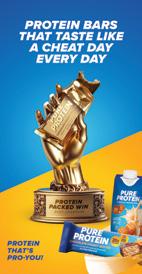

S 42 | SPONSORED SUPPLEMENT
1
2
experiential, sponsorship, and digital performance.
The integrated agency, with North American headquarters in Toronto and hubs in LA, New York, Chicago, Austin and Montreal, was built on a philosophy of “connections.” Structured into three pillars - strategy, creative and connections - that work together across all stages of a project. Lohnes says it’s Salt’s connections model that sets it apart. The approach is a forward-thinking way to solve clients’ business needs combining collaborative cross-functional thinkers, planning tools and technologies designed to deliver results. “Connections in the industry is often defined as many channels that ladder seamlessly to support a big idea,” says Lohnes. “We look deeper at the relationships between channels and what a consumer needs to move throughout the consumer journey. It’s about engineering creative designed to drive behaviour change. It may seem like a small nuance, but it makes a big difference in how we serve clients.”
Salt also continues to invest in owned tech products to drive efficiency and effectiveness within the connection process. These include Media Mob, a marketplace for freelancers in the production space offering content creation; Frontrunner, an automated social boosting platform focus on improved ROAS; and Podium, a realtime media mix modelling solution.
“When we started Salt, we spent time reflecting on what clients said were their biggest headwinds,” says Lohnes. “Two challenges we heard consistently were the need to move faster and budgets weren’t getting bigger. We believe that having tech-enabled solutions that allow for greater speed and overall effectiveness is where agencies need to be.”
Recent work with Toyota to promote its fun-to-drive Gazoo Racing performance vehicles is a prime example of the agency’s efforts to maximize clients’ budgets through its connections model, says SVP of
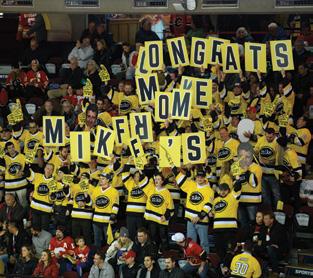
strategy and creative, partner Matt McCoubrey.
While Toyota is well known for reliability, it was looking to emphasize its fun side through experiential. The challenge, McCoubrey says, was limited budget. An event would likely have to be a small, one-off execution with limited opportunity to amplify. So instead, the creative team proposed an experience designed as a platform for creator-led storytelling, allowing for impactful targeted reach.
Inspired by the insight that Canadians believe there are few “fun” roads left to drive, the team recruited a diverse mix of creators to test drive on a purpose-built route in the Muskokas taking each driver through a series of story-worthy scenic content-capture opportunities. The drivers included foodie and radio host Deepa Prashad, travel and lifestyle photographer Eric Gagnon and car enthusiast Alex McInnis.
The “Secret Roads’’ experience was produced on a shoestring but resulted in over 52 platform native pieces of content and more than 18 million targeted views.
McCoubrey says the program exemplifies Salt’s drive to go beyond what’s easy to execute and adds that commitment to getting it right inspires brand trust.
In 2023, Salt was named the second fastest-growing company in Canada by The Globe and Mail as well as ranked the #1 Specialist Digital Agency in Canada by WARC. Its portfolio includes Shopify, Sephora and Hershey, alongside organic growth of existing partners like RBC, Kraft and AB InBev. The agency is also expanding its creative, sponsorship and shopper marketing teams.
Bernardo attributes this growth to the agency’s focus on delivering results.“We have thoughtfully assembled a mix of experts internally who provide our clients with the right solution to solve their problem,” says Bernardo. “And that’s where the trust comes in.”
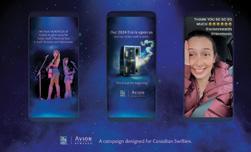

S43
3 4
Creating velocity through collaboration
M&H specializes in execution so your team can concentrate on developing great ideas
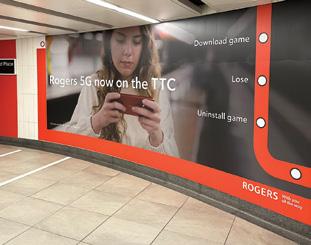
COLLABORATION IS WHAT M&H IS ALL ABOUT.
M&H works with some of the largest creative agencies in the world – think Sid Lee, Wieden+Kennedy, The Hive – partnering to help bring their creative ideas to life.
Its expertise lies in execution. It doesn’t lead strategy or creative. Instead, the M&H team works with brands and agencies once the big idea has taken shape, using its technology, expertise and talent to adapt the concept for paid and owned channels, in whatever form delivers results.
“It’s our ability to remain purely focused on the last mile of campaign delivery that makes us special,” explains the agency’s VP of growth, Dave Nourse. “We like to say that we deliver content with a velocity and efficiency that’s unmatched in the industry – without compromising the quality.”
M&H, which has been a presence in the Canadian industry for over 50 years, offers partners access to a full digital team, project managers, artists, designers, retouchers, writers, motion designers and translators, all of whom understand the nuances of agency production. In fact, the entity has grown to become the largest independent creative production studio in Canada, with more than 165 full-time employees in Montreal
and Toronto. Nourse says M&H is in demand more than ever, thanks to the unprecedented proliferation of channels popping up across digital, video, print and out-of-home.
A recent study by CreativeX called Waste Not, Want Not highlighted the biggest challenge that comes with all those channel opportunities: 52% of budgets, it says, are being wasted on creative that’s not fine-tuned for the channel – assets that are “statistically unlikely to deliver impact because they are unsuitable for the media they’re placed in.” That represents both a substantial hard cost and a lost opportunity – and brands know it.
“Over the last year, there’s been more of a decoupling of the ‘idea agency’ and ‘production agency’,” Nourse explains, “in terms of somebody that handles content production and somebody that handles the amazingly great creative ideas.
LEFT: For the launch of the Rogers’ TTC System 5G Network Enhancement, M&H worked with Sid Lee to produce a comprehensive campaign that included a complete Union Station takeover complemented by a social and digital campaign for maximum impact. The effort included more than 150 assets.
“We’ve been entrusted by highly creative agencies who understand that the development of the creative is as important as the development of the idea,” he adds. “We just know the intricacies of how to take an idea and perfectly fill the owned and paid channels that a client brings to a campaign or a brand initiative.”
M&H leverages an extensive set of creative and organizational tools (Workfront for project management and Adobe Creative Suite), as well as automation process tools (Dynamic Creative Optimisation [DCO] and Workfront Fusion), to get large volumes of targeted work out the door within 24 hours.
Consider the launch of the new Rogers’ TTC System 5G Network Enhancement campaign in August last year. Working in collaboration with Sid Lee, this comprehensive campaign encompassed a complete Union Station takeover – including platform and pillar posters, stair risers, floor decals, station door wraps, bulkheads, farebooths and wall murals – and was complemented by a concurrent social and digital campaign for maximum impact. The campaign featured more than 150 bespoke assets that helped Rogers dominate the landscape.
For one of their most recent campaigns, M&H worked with Wieden+Kennedy on the relaunch of the McRib for McDonald’s Canada this past January. M&H built OOH, display, social and CRM assets for the Canada-wide launch – almost 200 in all.
“We just execute towards the finish line,” says Nourse. “There are lots of agencies that I know will expand the creative idea to no end, and those are great collaborative agencies. We’re a little bit different.”
“It’s just part of the new model for clients because, they’re asking those ‘under the hood’ questions more. We’re a great option for agencies looking for help bolstering their production expertise.”
S 44 | SPONSORED SUPPLEMENT
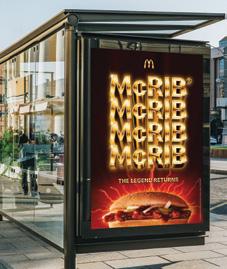
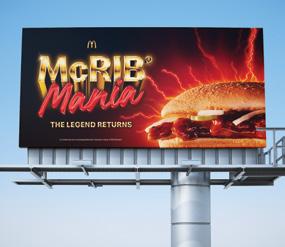
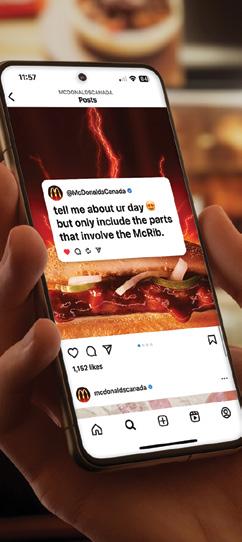

CONTACT:
Dave Nourse Vice president, growth dnourse@mh.ca
S45
BELOW: 1, 2 & 3 Working with Wieden+Kennedy, M&H built nearly 200 unique assets including OOH, display, social and CRM for the relaunch of the McRib for McDonald’s Canada in January.
2
3
1
Building community through augmented reality
Tim Hortons partners with Snap to unlock immersive innovative experiences

OVER THE PAST FEW YEARS, Tim Hortons has embarked on a digital transformation, says the QSR’s head of media and digital marketing Raven Opatovsky. “To do so, it was looking for new partners to help it better engage with young adults.”
ABOVE: Snapchat’s Tim Hortons
Princes’ Gates AR Landmarker Holiday Activation (2020).
Snapchat seemed like a perfect fit. The visual messaging app, which largely connects friends and family, has over 800 million monthly users globally and more than 11 million monthly active users within Canada, reaching more than 90% of 13 to 24 year olds in over 20 countries including Canada, says Calvin Wilkinson, QSR and automotive lead at Snapchat who works very closely with Tims.
It was that reach and demo that drew Tim Hortons’ interest in partnering with Snapchat for its annual “Roll up the Rim to Win” promotion in 2020.
The long-running campaign previously required customers to roll up the rim of their cups to reveal a prize. In transitioning the promotion to digital, the QSR sought a direct tie to the newly launched Tim Hortons Reward app –the future home of the entire promotion.
“That was our challenge: how can we ensure that there’s clear connectivity between external platforms and our own interface,” Opatovsky says. “We wanted to give users the experience of rolling up in the new Tim’s app.”
Customers were invited to virtually roll up their cups in Snapchat with an AR Lens, mimicking the experience of the Tim’s app by showcasing how easy the digital experience could be before being directed to the branded portal.
“We also found by using AR, we were turning Canadians into influencers,” she adds. “They were playing with the Lenses at the time and showcasing their own love for our new ‘Roll up to Win’ platform and advocating for us.”
The AR function and tight-knit communities on Snapchat have continued to appeal to Tim Hortons as the partnership expands.
“On Snap, you have an average of 30 friends,” Opatovsky says. “That private environment for communication is unique and Tims is very much grounded in Canadian, community-based values.”
AR, initially an innovation testing ground for Tims, has become a key component of the brand’s digital strategy.
“The immersion of allowing somebody to interact directly with your brand – literally put it on their face – is not the same as just consuming brand content,” she adds. “It really has an impact on performance.”
Opatovsky points to the 2021 partnership to promote a limited run of branded Tims apparel. Alongside traditional media and retail activations, Tims and Snap unveiled an AR Try-on Lens that allowed users to virtually try on branded tracksuits inspired by the famous “double double”.
“Tims was the global first advertiser to leverage Snap’s advanced 3D Body Tracking AR tech for AR Clothing Try-on, which put a Snapchatter in an AR tracksuit that they could swipe up to purchase,” Wilkinson says. The campaign also meant people who weren’t able to purchase the apparel (which sold out within hours) could still “trying it on” and share with friends, amplifying it’s limited reach.
For Tims’ campaigns specifically, Snap’s research (across brand lift studies over a four year period) found that campaigns using AR Lenses were twice as likely to be viewed favourably compared to those that didn’t have a custom created Lens. Using a Lens also saw a 100% ad awareness rate compared to 71% for campaigns run without one.
Snap and Tims’ partnership is one of close collaboration and has evolved into an “always on” model, thanks in part to the platform’s high-touch approach to clients, says Opatovsky.
Snap’s support team consists of more than 100 Canadian employees working across numerous verticals, closely with clients and agencies to integrate Snapchat creative experiences into their marketing plans.
“The Snapchat team is hyper invested in us,” says Opatovsky. “They are acting as stewards of Tim Hortons on Snapchat. We have an amazing relationship and it’s one of the reasons that they continue to be a top partner for us.”
S 46 | SPONSORED SUPPLEMENT







CONTACT:
Calvin Wilkinson QSR and automotive lead calvin@snapchat.com
S47
1 6 2 5 3 4
LEFT: 1, 2, 3 & 4 Tim Hortons’ AR Portal Lens, enabled Snapchatters to discover Tims’ Hockey Card Collection in the virtual world and tap to collect them; (2021-22 Hockey Cards). 5 Tim Hortons’ AR Try-on ‘Double Double’ Track Suit on Snapchat; (2021). 6 Raven Opatovsky, head of media and digital marketing at Tim Hortons.
The CMO Interview
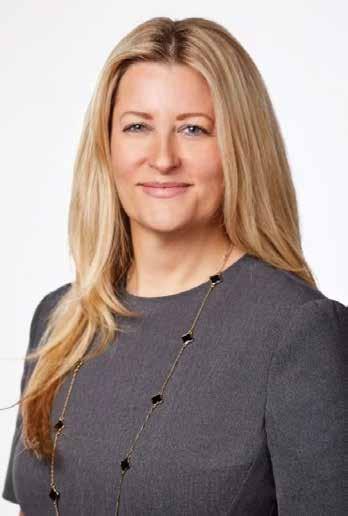
Laura Curtis Ferrera (above): Jonelle, you’re back from the Netherlands and it’s your second time at IKEA, isn’t it? So you’re in a really interesting place to answer a tough question: what’s keeping you up at night?
Jonelle Ricketts (far right): I’ve been in the marketing industry for over 20 years, and the thing that still keeps me up is diversity and inclusion in the marketing industry. Although there’s been a lot of change, there’s still a long way to go. It’s been really important to me to find ways to make this industry more inclusive. Who are the partners that will help us achieve this dream and build a pipeline of
While no two marketers’ jobs are quite the same, there are challenges common to anyone trying to establish rapport with Canadian consumers. In the launch of strategy’s new content series – which will include an extended version online – Laura Curtis Ferrera, CMO at Scotiabank, and Jonelle Ricketts, head of marketing at IKEA, sat down for a fireside chat about some of the pressing issues they’re facing today.
BY JENNIFER HORN
talent that really represents Canadians? I’d love to see our industry looking more like the makeup of our country.
Curtis Ferrera: It’s about doing things, every day, that will make meaningful change over the long-term. Sometimes it’s big programs like Scotiabank’s “Hockey For All.” But sometimes it’s the small, consistent decisions we make around procurement. Who are the vendors? Who are the partners and what are our expectations on them to further our goals? One of the things that I contend with every day is how can we, as a marketing organization, marry the twin goals of force for good and force for growth? How do you think about setting a leadership agenda that others will follow?
Ricketts: Something I’ve been trying to do with my team, right from the beginning, is letting them know that this is a huge passion of mine. And although we have a lot of different things that we need to tackle, this is something that I want to ensure we prioritize and that we weave into all of the work. Maybe they’re baby steps, maybe we won’t be done in our lifetime. But at least we’re making some groundwork.
Curtis Ferrera: There’s this interesting push-pull right now around short and long
term measurement periods and how that is affecting brand. We’re measuring to each and every quarter. And the impact that can have on brand decisions is long-term. Somebody asked me this past week, “Well, you must be pulling back on brand dollars.” And I said, “Absolutely not. No. In fact, we’re investing more, because brand is the last unfair advantage we have.”
If you think about “You’re richer than you think,” 76% of Canadians know and love that tagline. And today we’re investing in a discussion around there being more to life than just more. We can be part of a conversation around how to genuinely help your life be better through real advice. You can’t substitute that kind of brand value for just talking about functional benefits of a product, you need both. I haven’t thought as much about brand as I do today.
Ricketts: I 100% agree. At IKEA, we have a marketing model in place. And it’s not just for Canada, but across the globe. It’s nothing new, but we talk about this “attract” layer, which is probably another word for “brand.” We fight to protect that. I think the great thing is that we are privately held, so we don’t have to worry about shareholders chasing us down for every single quarter. And we have a really unique philosophy
48 strategyonline.ca
where, when we’re planning, we’re thinking about the future. We’re not thinking about it as next fiscal year, but about generations to come and making sure that we’ll be around for another 80 years.
Curtis Ferrera: Absolutely, everybody would agree with the notion that we’re building brands that are sustainable over generations. And I think our opportunity as marketers and leaders is to break down some of the brand metrics, so that we can illustrate it even better. It’s easy to illustrate sales. We could talk sales KPIs all day. But what that does is it reinforces an over-investment in functional advertising. I think our opportunity is to make it easy to understand the value of brand. What are you doing to illustrate success at the brand level to your stakeholders?
Ricketts: I think what’s been a real gamechanger for us has been the introduction of econometrics. There’s been a lot of trust built in the organization around that, and the science behind it. We look at what marketing dollars are contributing – not only in the short term, but also in the long term. And, also, with some of that modeling, we can do predictive analyses to see what would happen if we were to decrease budget from brand. Once you’re able to show that picture, it becomes very clear that there’s no time to slow down on investing in brand.
Curtis Ferrera: Where does IKEA play when you think about the economic cycle we’re in?
Ricketts: For us, this is really built into our DNA – to create home furnishings that are affordable for as many people as possible. But we also know that what people might consider affordable is changing. And we recognize that people have thinner wallets right now. And even if they do have some money leftover, they may have different priorities. So we’re investing over $80 million to be able to reduce prices of our most loved products. That’s over 1,500 products throughout the year that we’re going to be lowering prices on.
Curtis Ferrera: There’s a lot going on right now, we’ve got a lot to contend with as
marketers. How do you think about your role on the change agenda?
Ricketts: As marketers, we’re bombarded with changes, whether it’s new ad formats or tech. It really comes down to working closely with my team and asking, “Is this a good fit for our brand and will it allow us to speak to a new audience?” We had a recent example, where we were promoting our new gaming range, which is hugely popular. We had no idea how many Canadians actually game until we started to get into this space. We ended up partnering with Twitch, which was very new to our team. We partnered with a video game influencer and did a live stream within our IKEA Ottawa store where we had a chance to showcase the new gaming range. We even promoted IKEA food products for when gamers are snacking. It created awareness with an audience that we have never spoken to before, and ended up breaking some records with live-stream viewers at the time. We all went into it a little bit scared and not knowing what was going to happen. But it ended up being a really good thing.
Curtis Ferrera: And you don’t get to those great ideas if you’re trying to control everything as a CMO. The way those ideas organically grow is by having integrated teams and operating as an agile squad. We can set a structure for teams to bring their best ideas, collectively. The notion of CMOs defining everything doesn’t work anymore. We need to take a step back, relinquish some control, set terms of engagement, and let them come up with those incredible ideas. Because things like the gaming consoles come from groups of diverse thinkers.
We just came off of NHL All Star, which will probably be the biggest sports activation that we will do as a bank this year – or even for the last number of years. It was huge for us. Probably about 100 different Scotiabankers worked on it. We built an app called Scotia Perks so that wherever you were in the city experiencing the All Star, you could get different discounts and access privileges. And you didn’t have to be a Scotiabank client. It was a big investment in time, not necessarily just dollars. We gave the team

permission to say, “Let’s consider this a beta. Let’s see what it does. Let’s analyze it. And then we’ll iterate.” There are so many good learnings that can come from allowing people to move with pace, as opposed to being strangled by perfection.
I want to end with a question for you. How is change taking a toll on our teams? We’re asking a lot of them right now. Especially as we move from campaigns to always-on. How do you think about leadership in this period?
Ricketts: One of the things that has been helpful is sharing my overarching vision with our team, so that they understand where I’m coming from and some of the things that will ladder up to that. And a lot of it comes down to empowering them. I tell the team, “I’m not an expert in everything. I’m not always going to get things right.” So being humble in that sense.
Curtis Ferrera: Yes, and our values are also so genuinely important for our teams and the industry. If we can collectively create environments that are rooted in trust and empathy, and if we can help our teams to have some semblance of balance, then I think we are doing our jobs right.
49 Spring 2024
What really happens after a pitch – and how to get client buy-in
BY ANDREW MUSHING
Suburban Toronto business parks have graveyards full of awesome ideas that died following a client presentation. Surely some of these moments of brilliance had legitimate reasons for being killed off, or at the very least, archived in a cryo-chamber to be resurrected once the brand team has sufficiently turned over.
For many of these ideas, though, their only flaw was that they neglected to appreciate the behind-the-scenes chaos on the client’s side. That chaos isn’t anyone’s fault, and the messiness is often what makes working for a brand fun, challenging, and rewarding. Agencies can’t avoid this entirely, but they can tilt the odds in their favour and give those awesome ideas a better chance at being bought.
Know the objective behind the objective: One of many great scenes in the movie Swingers depicts Vince Vaughn’s character telling Jon Favreau’s that he wants to see “the guy behind the guy behind the guy.” In our world, agencies need to understand the goal behind the goal behind the goal. Sure, the brief outlines a brand’s objectives (although not always), but there are also unspoken goals that are just as important to sell your ideas. Do they want to win an award? Do they want to get promoted? Do they need to urgently show business results? Maybe they just want to get something, anything out the door. This will be different for everyone, and it’s important that you understand

the underlying motivations for everyone who has approval rights for your work.
Uncover the ick: Every so often, between TikTok’s of the North Sea, Ninja Creami recipes and sales cold calls, my social media algorithm will randomly spit out some college kid asking the other: “What’s your biggest ick?” Yes, this content is incredibly stupid, but there’s a lesson in there somewhere. Do you know your client’s biggest ick? Good
Good agencies will know the work their client loves, but great agencies will know the work their client hates.
agencies will know the work their client loves, but great agencies will know the work their client hates.
they thought was the ickiest idea, so you could avoid those pitfalls in the future and get to better work more easily? In your next feedback session, before you close the meeting, ask your client what they disliked and why.
Kill the fluff: Before the mixing process of a song is finished, the producer will play their song on a car stereo or Bluetooth speaker. They do this to hear the song in the worst possible environment; if they can make it sound amazing there, it’ll sound amazing anywhere.
Whether you know it or not, your creative ideas are often subjected to the client’s version of the “worst possible environment.” As your ideas are being sold up the food chain, imagine them being jammed into the last five minutes of a 1:1 with the CMO’s boss, hosted on Microsoft Teams, being presented by one of the CMO’s team members who is using this as a rare but crucial opportunity to build exposure with senior leadership. There are good reasons for all of this, but this scenario is certainly not conducive to translating the passion of the original presentation.
ANDREW MUSHING is the senior manager, omnichannel media and marketing excellence at Hershey. His column is part of a new strategy series in collaboration with APG, as it launches Eat Your Beets, a book compiled of articles by strategists and marketers.
Be sure that even in the best agency/ client relationships, at some point your client has taken work back and said, “I absolutely hate that idea” but never told you about it. Why? Perhaps it’s the natural inclination of Canadians to be polite and avoid confrontation. Maybe it’s the desire to focus the feedback on the work that they want to proceed with. Whatever the reason, it’s likely that despite your best efforts, you have produced something along the way that the client loathed. As difficult as it would be, wouldn’t you want to know what
So, agencies, while I love your singlephrase slides and gifs, do yourself a favour and boil your great work down to a one-page leave-behind. Summarizing the objective, insight, idea, and tactics will set both you and your client up for success regardless of where and how that summary is shared during the alignment process.
If there’s a common theme here, it’s the importance of building transparent relationships over time. Like a marriage, it takes work and uncomfortable conversations, but in the end, it will yield a shared ambition and increase the chances of your work surviving the client gauntlet. Good luck!
50 www.strategyonline.ca
FORUM

Get corner office perspective in your inbox. Sign up for your weekly briefing on how Canada’s brand leaders are responding to market challenges and acting on new opportunities. strategyonline.ca/subscribe MARKETING C-SUITE
Share yours. Entries now open. The catalyst for work that works is a brilliant strategy. awards.strategyonline.ca Late deadline: April 19


































 Mike Dubrick Rethink #1 CD
Mike Dubrick Rethink #1 CD






 Xavier Blais Rethink #2 Creative Director
Xavier Blais Rethink #2 Creative Director

 Hemal Dhanjee C Ourage #1 Copywriter
Hemal Dhanjee C Ourage #1 Copywriter






































































